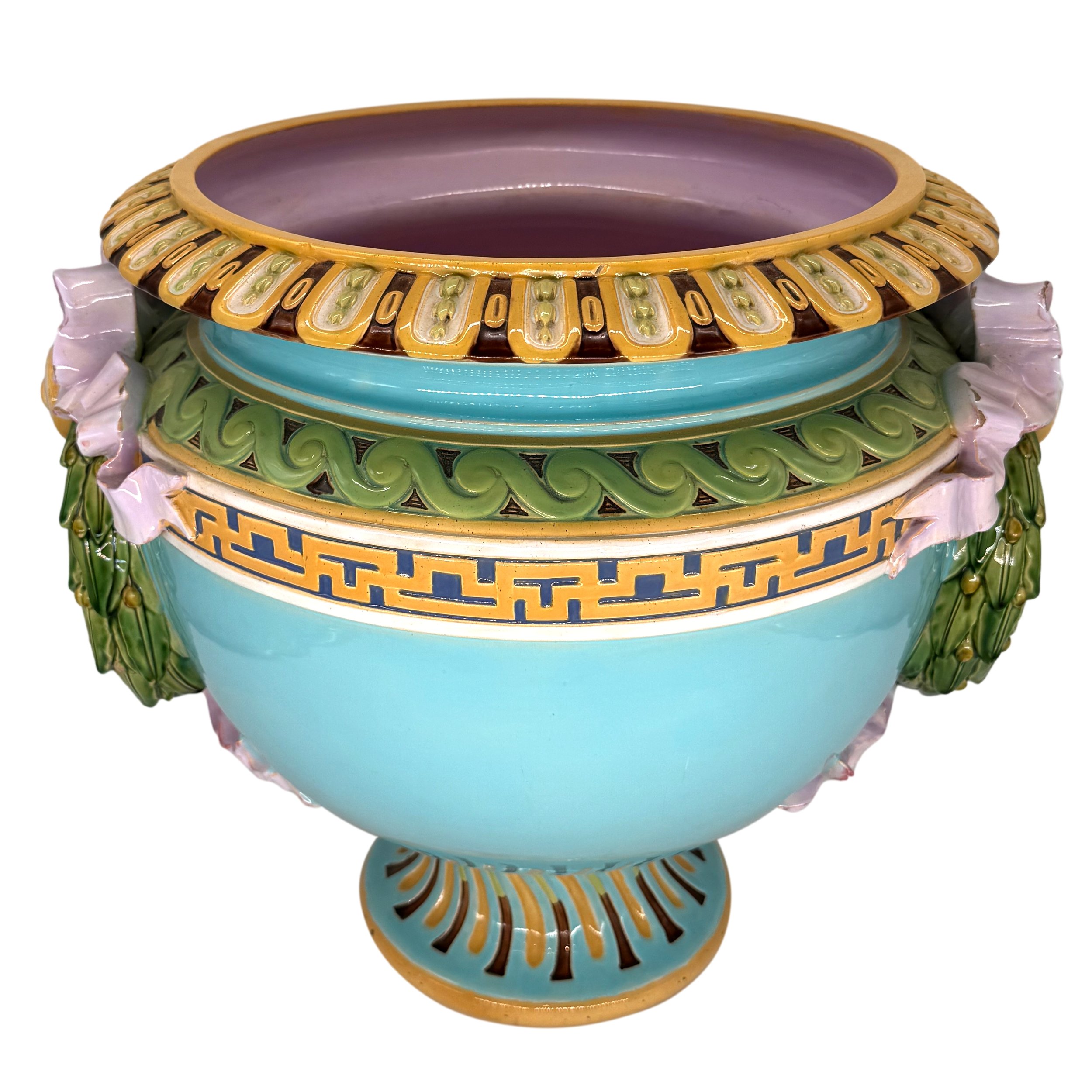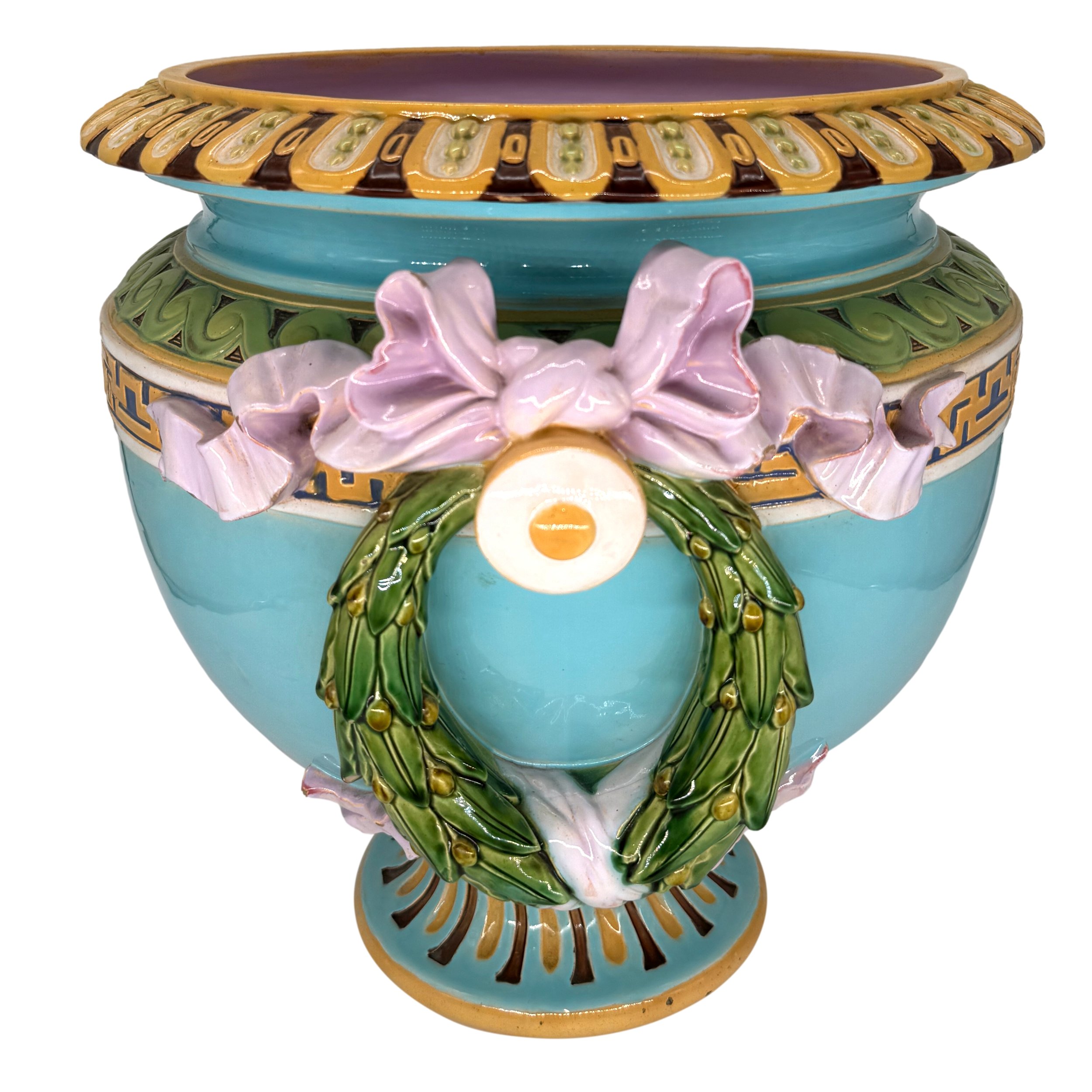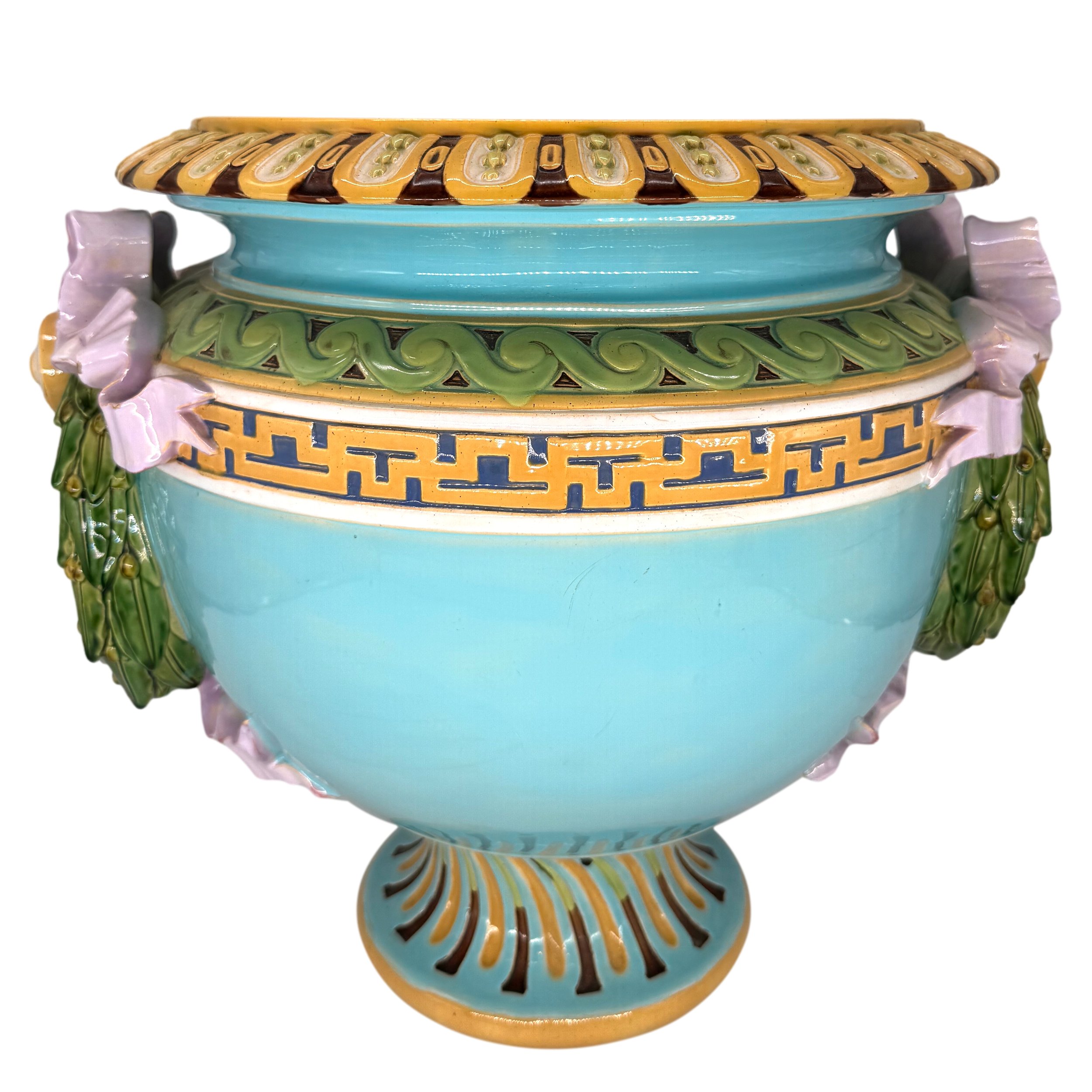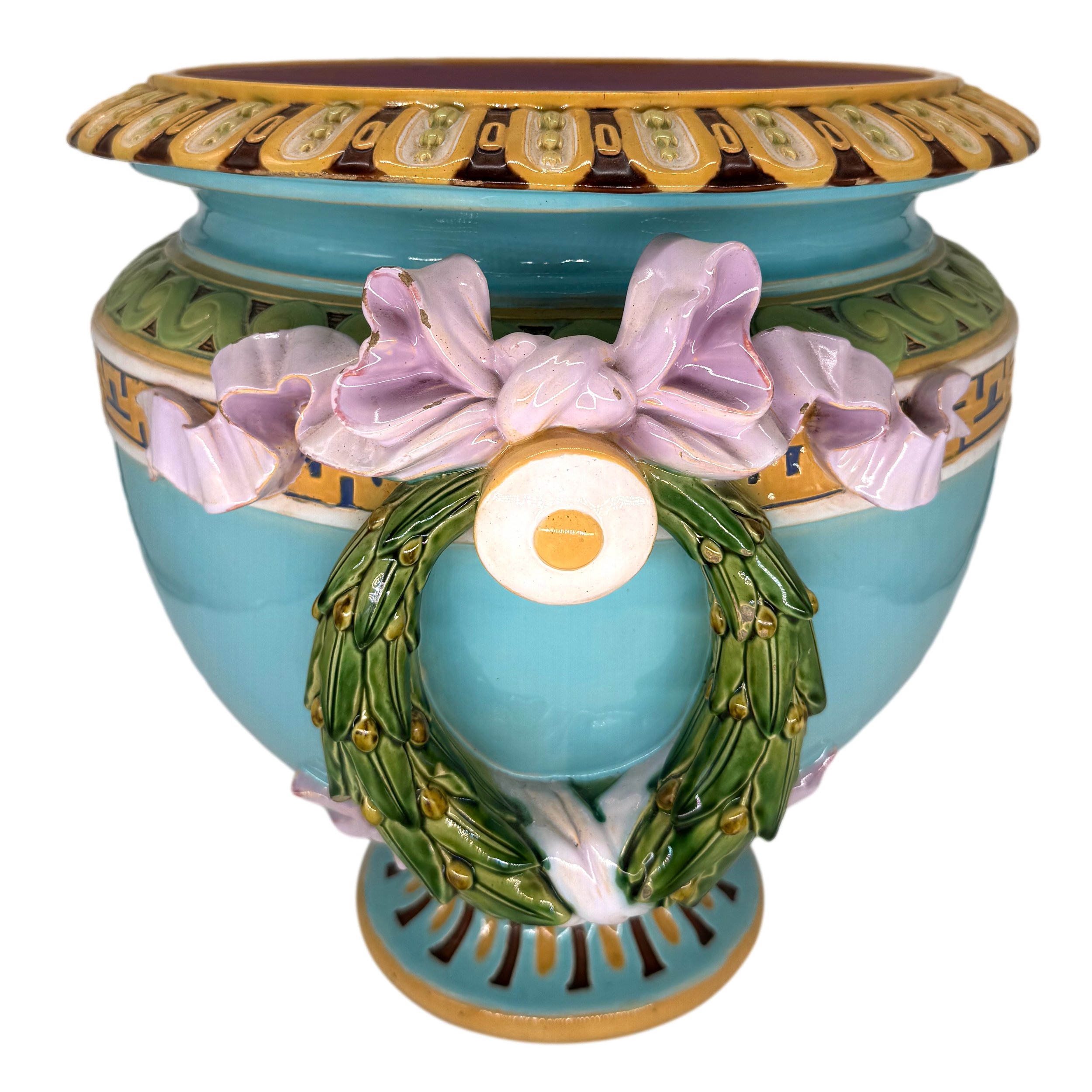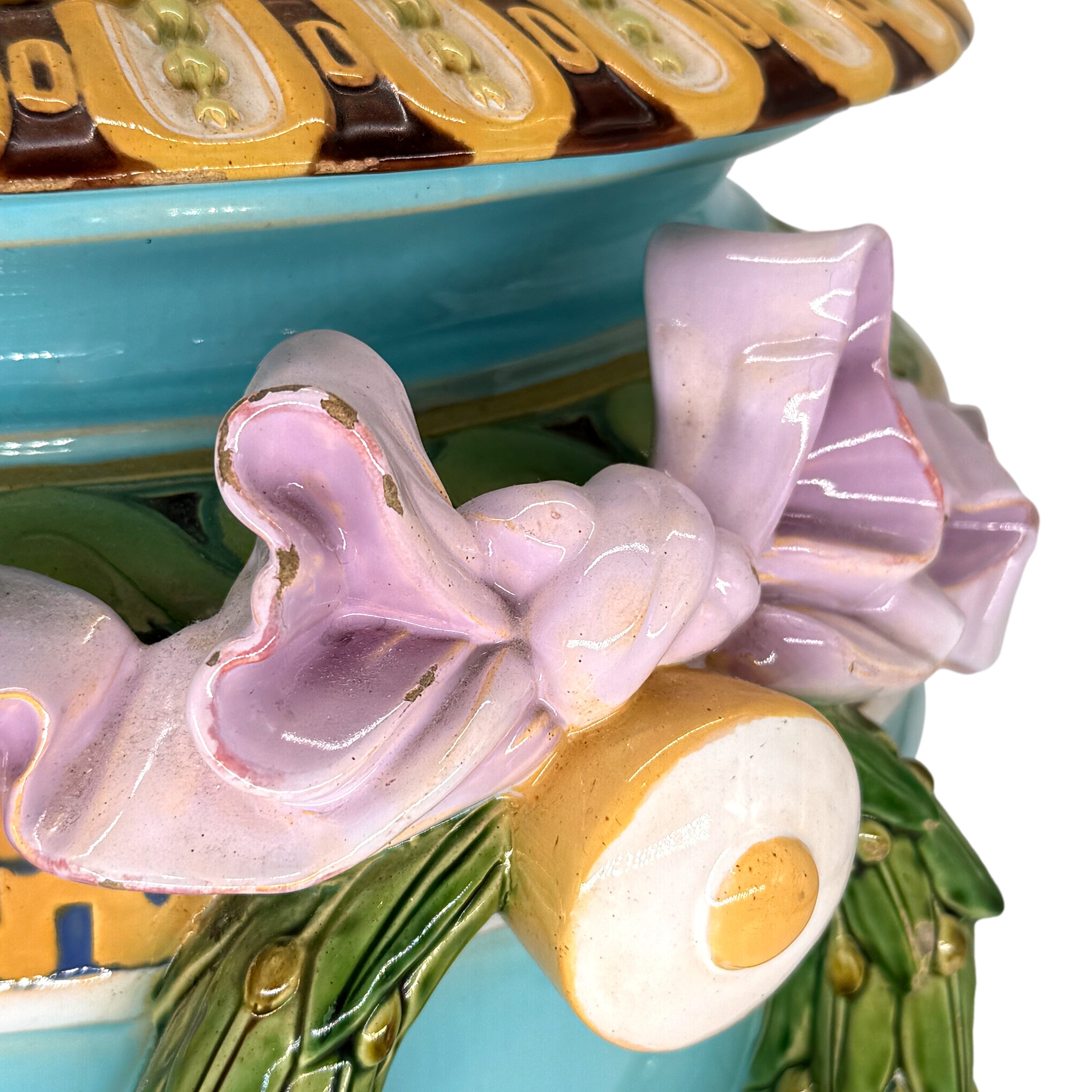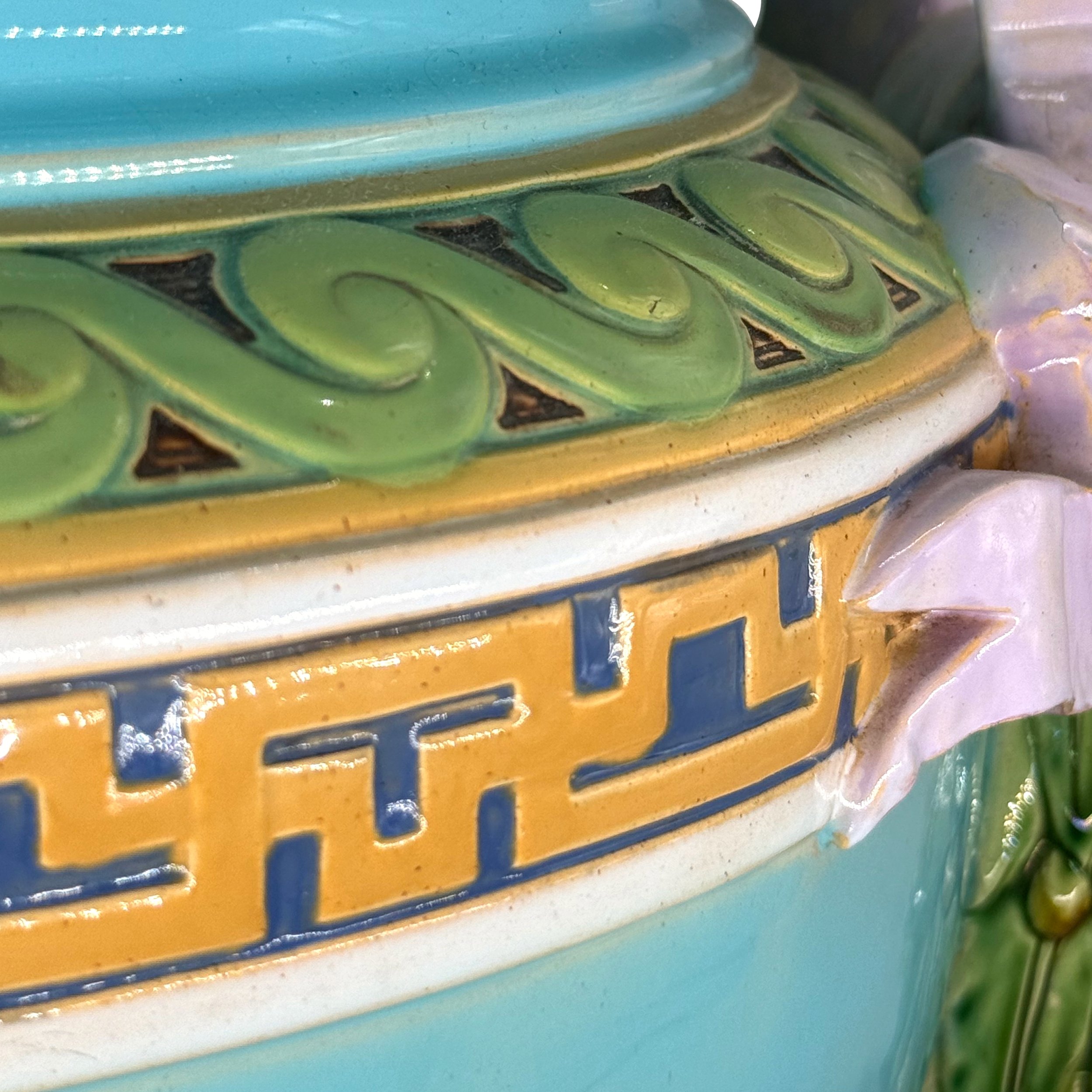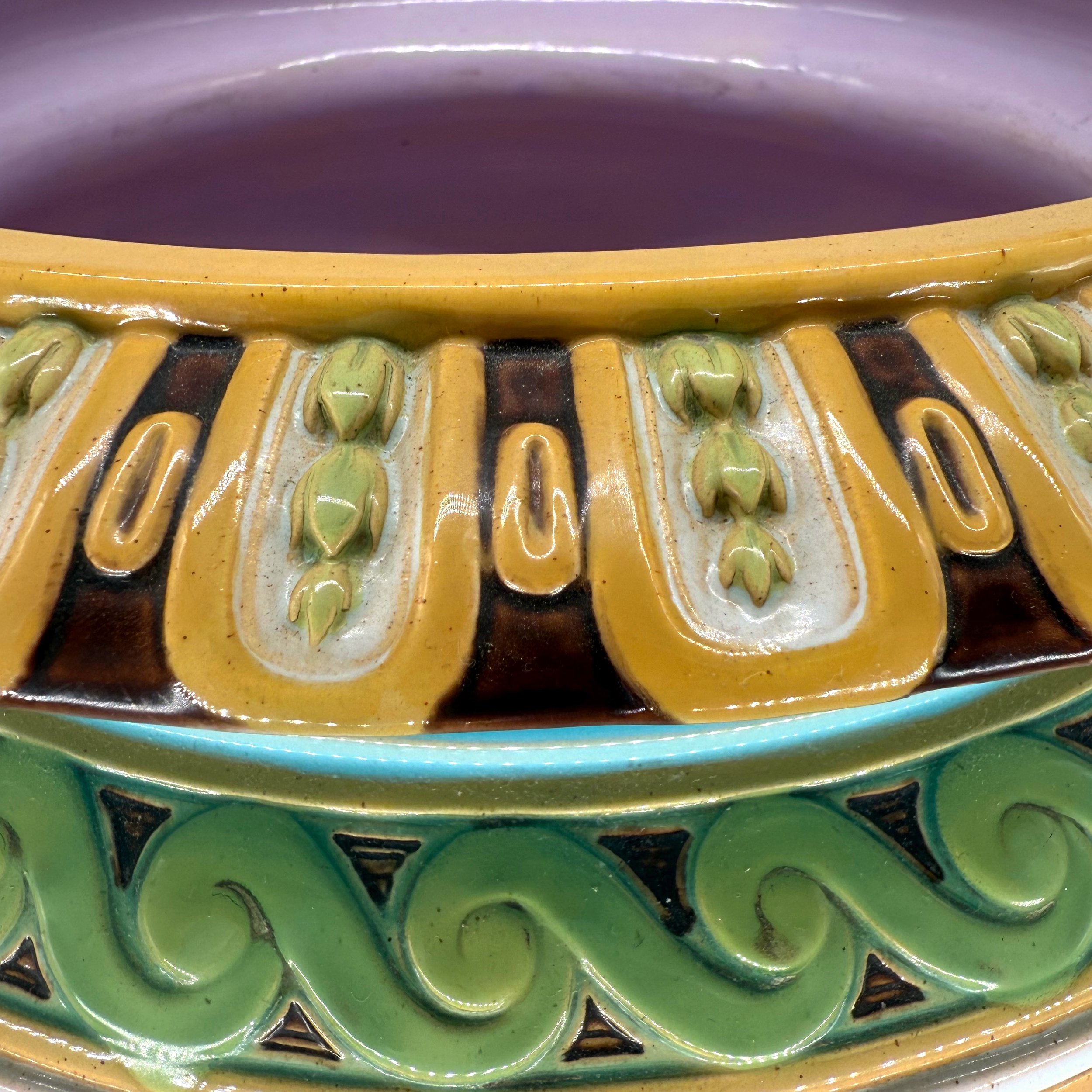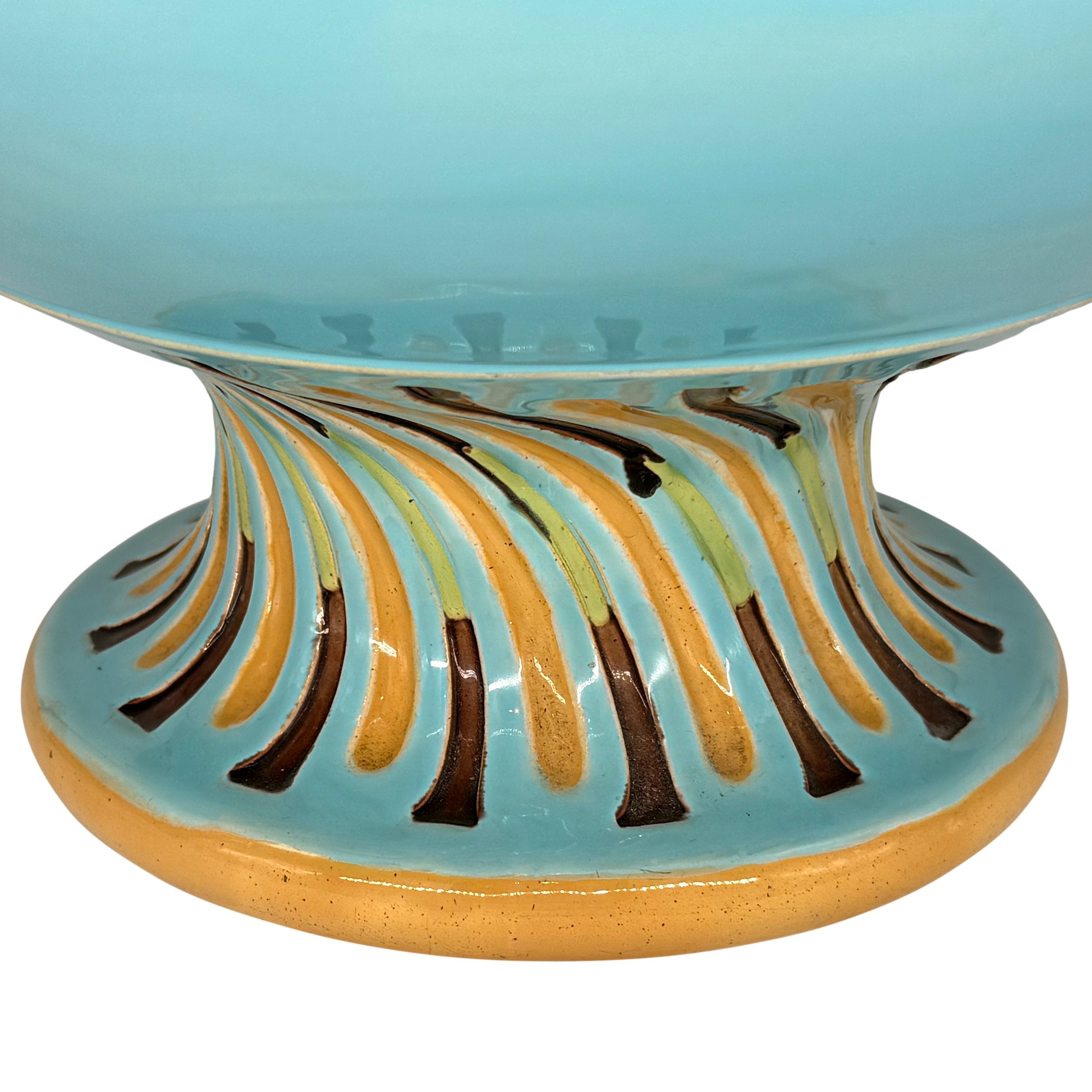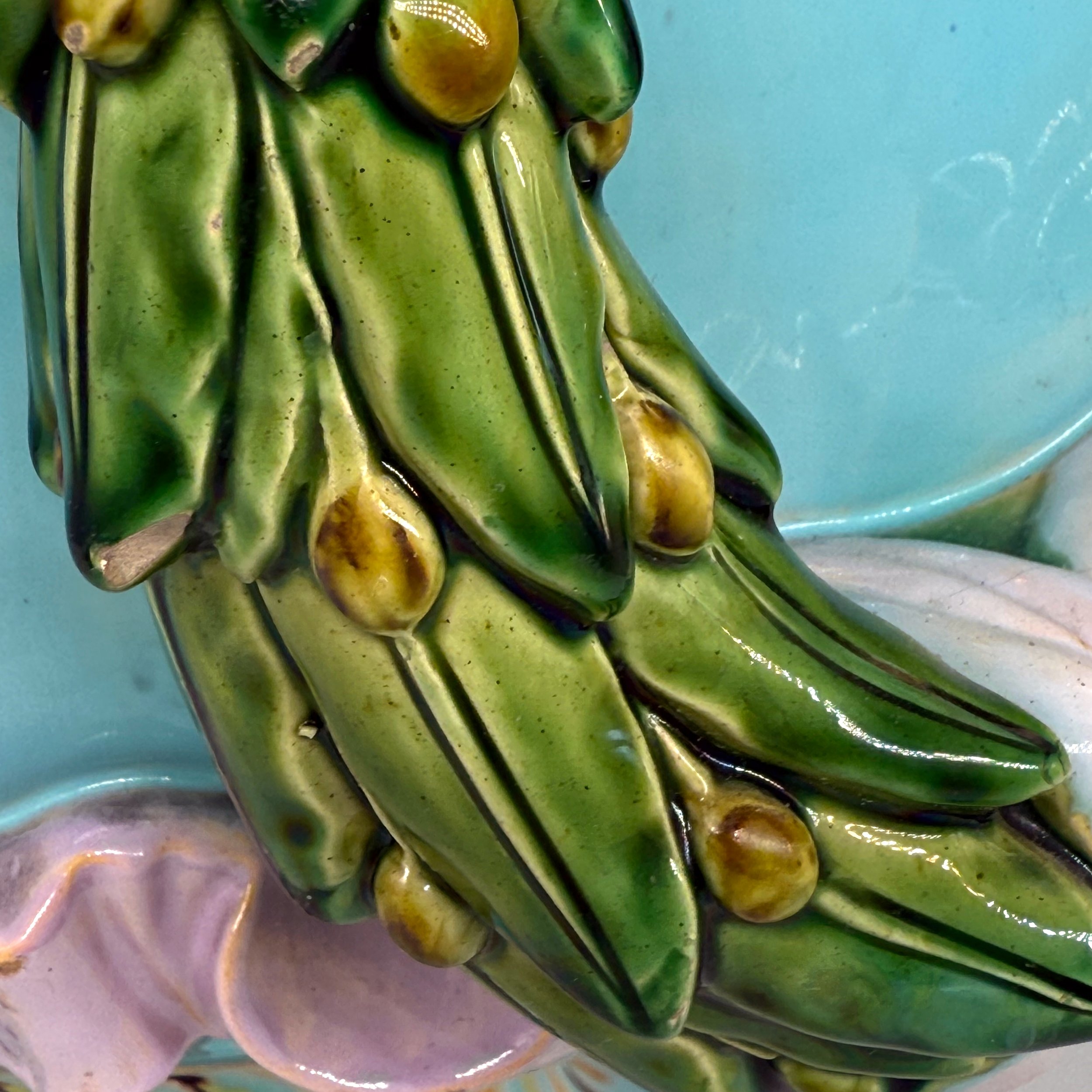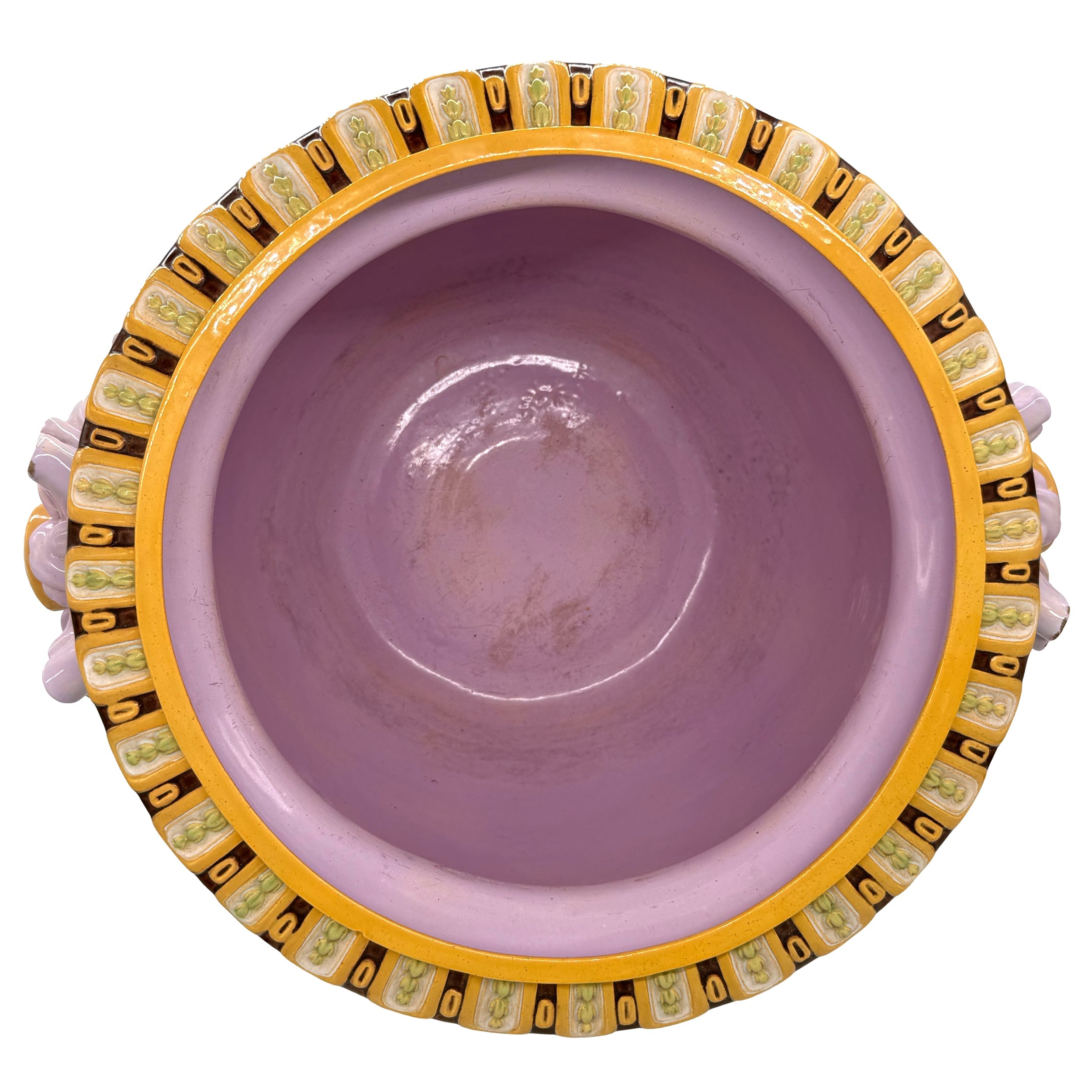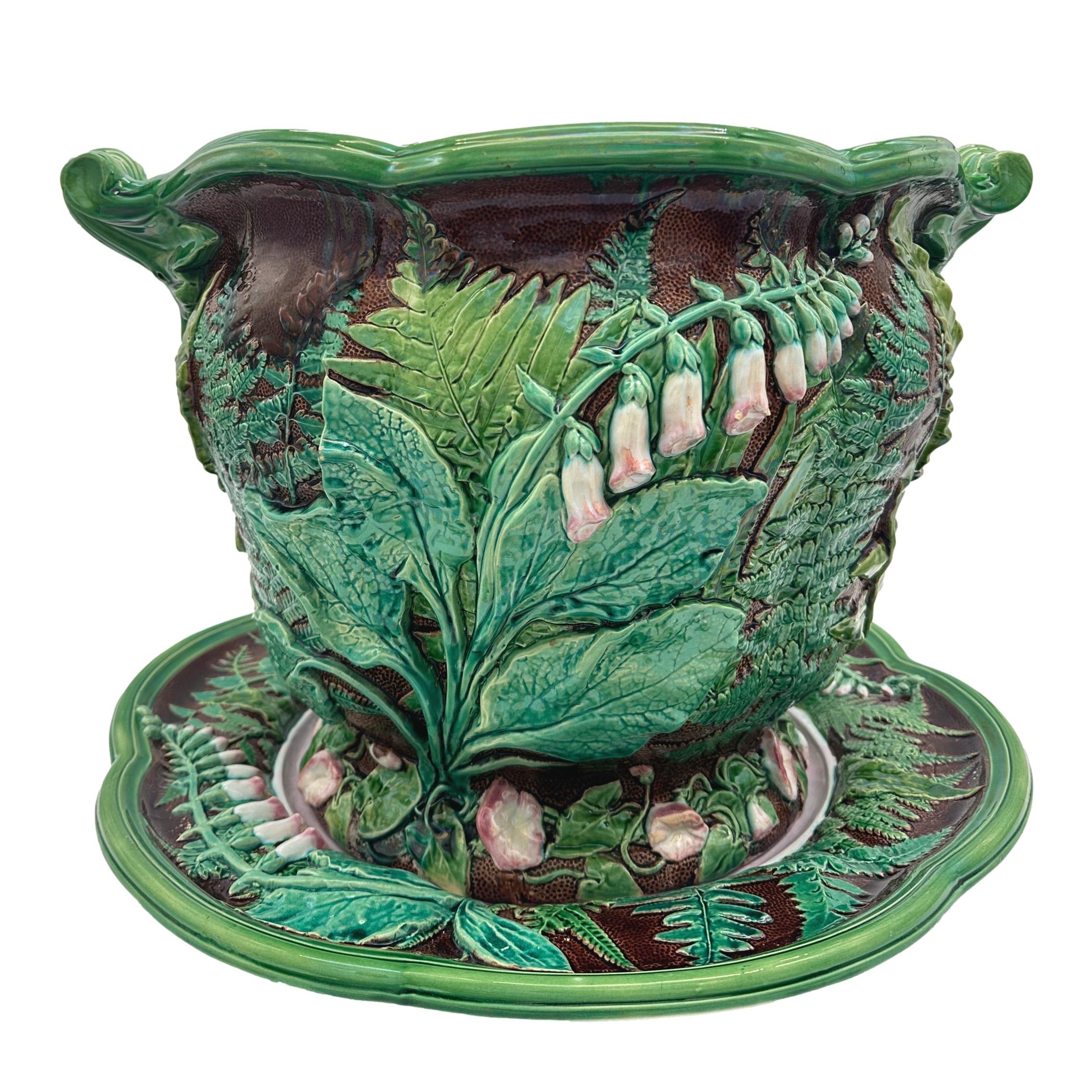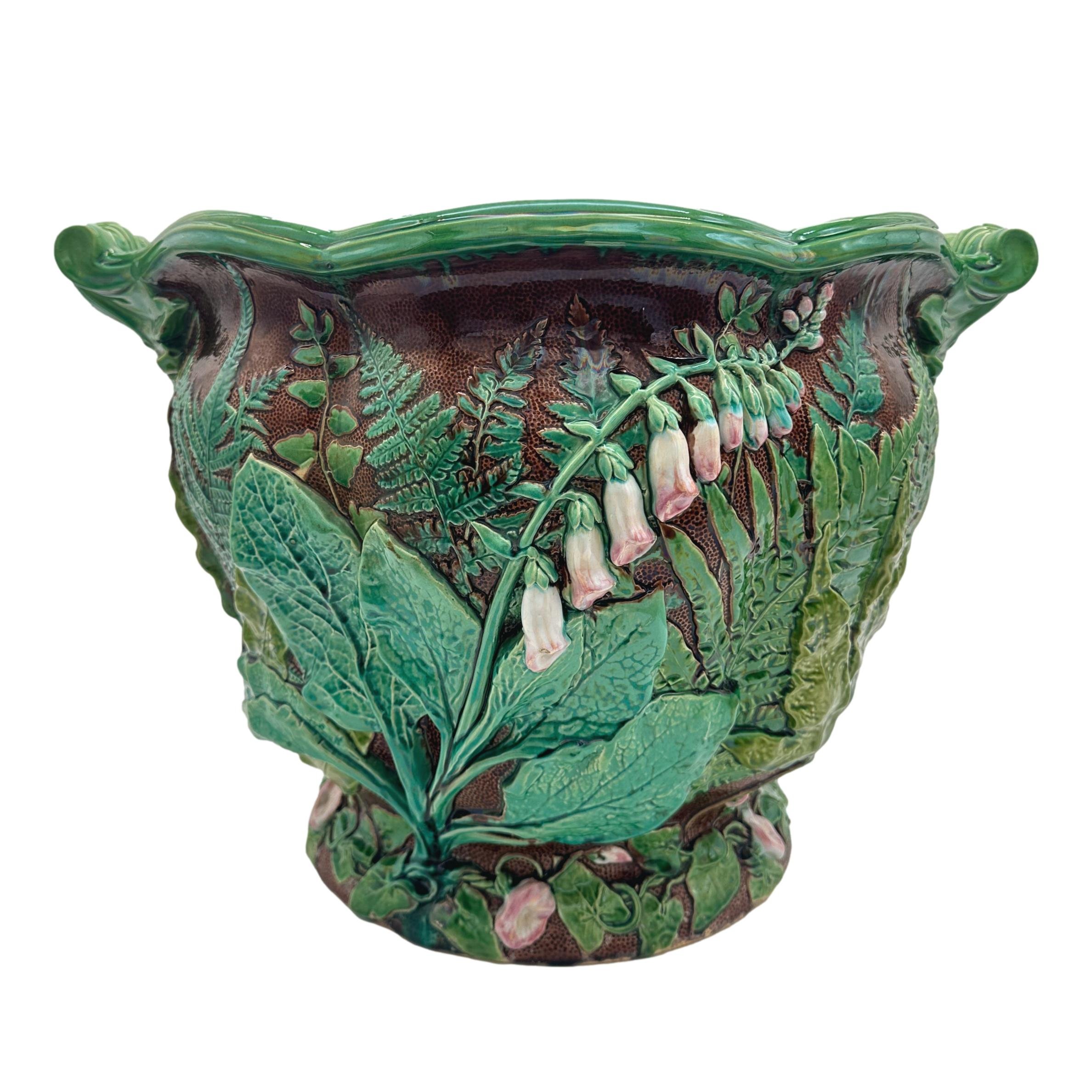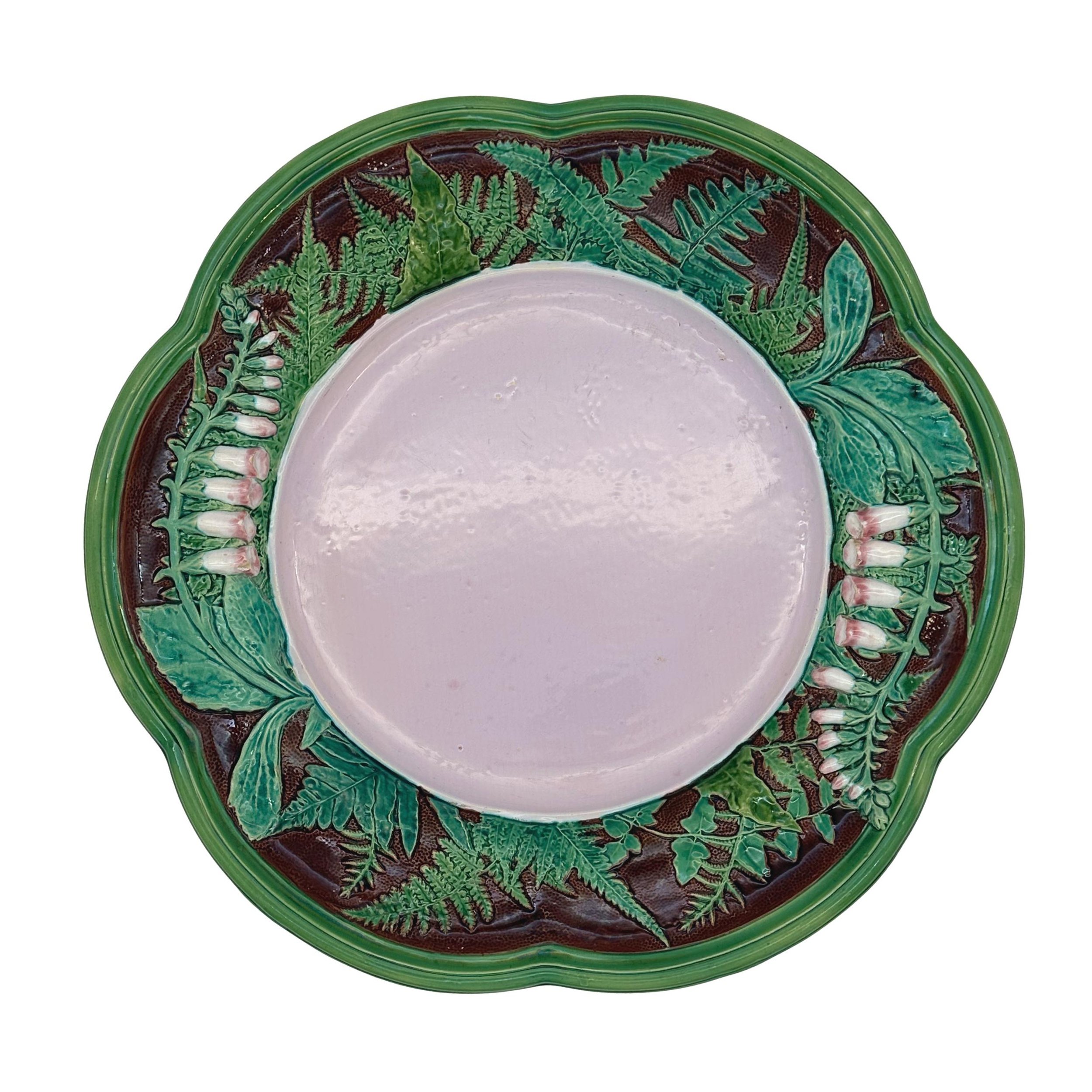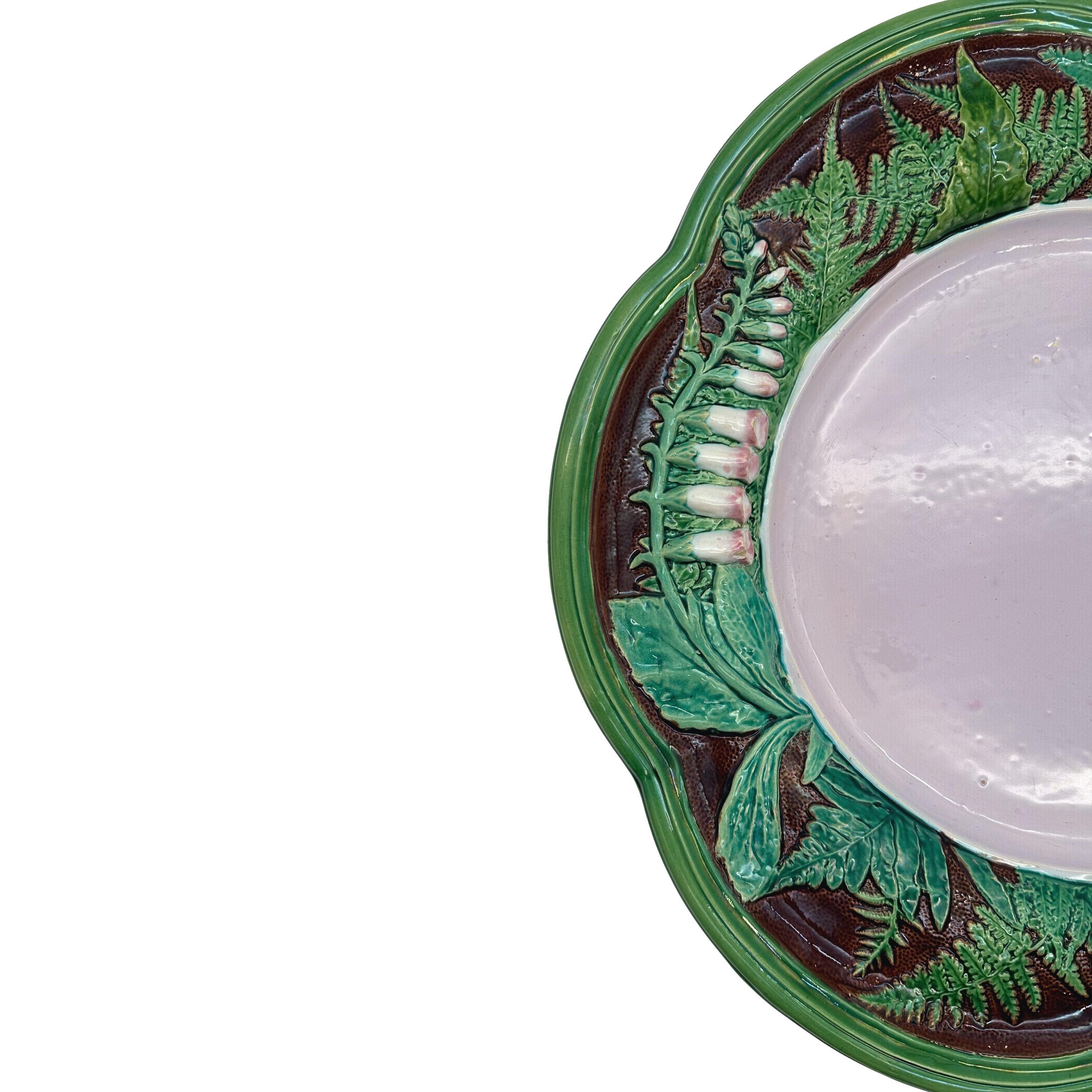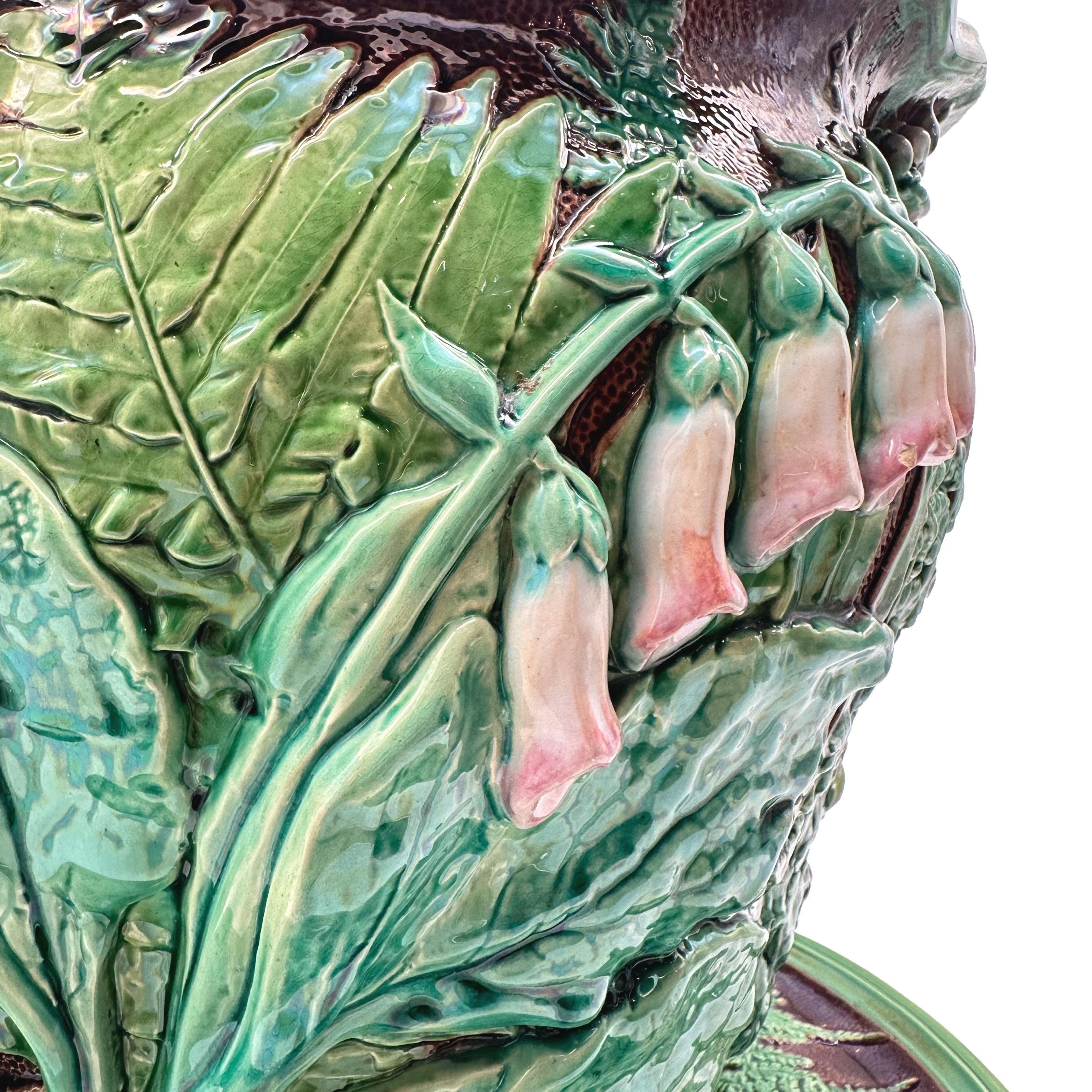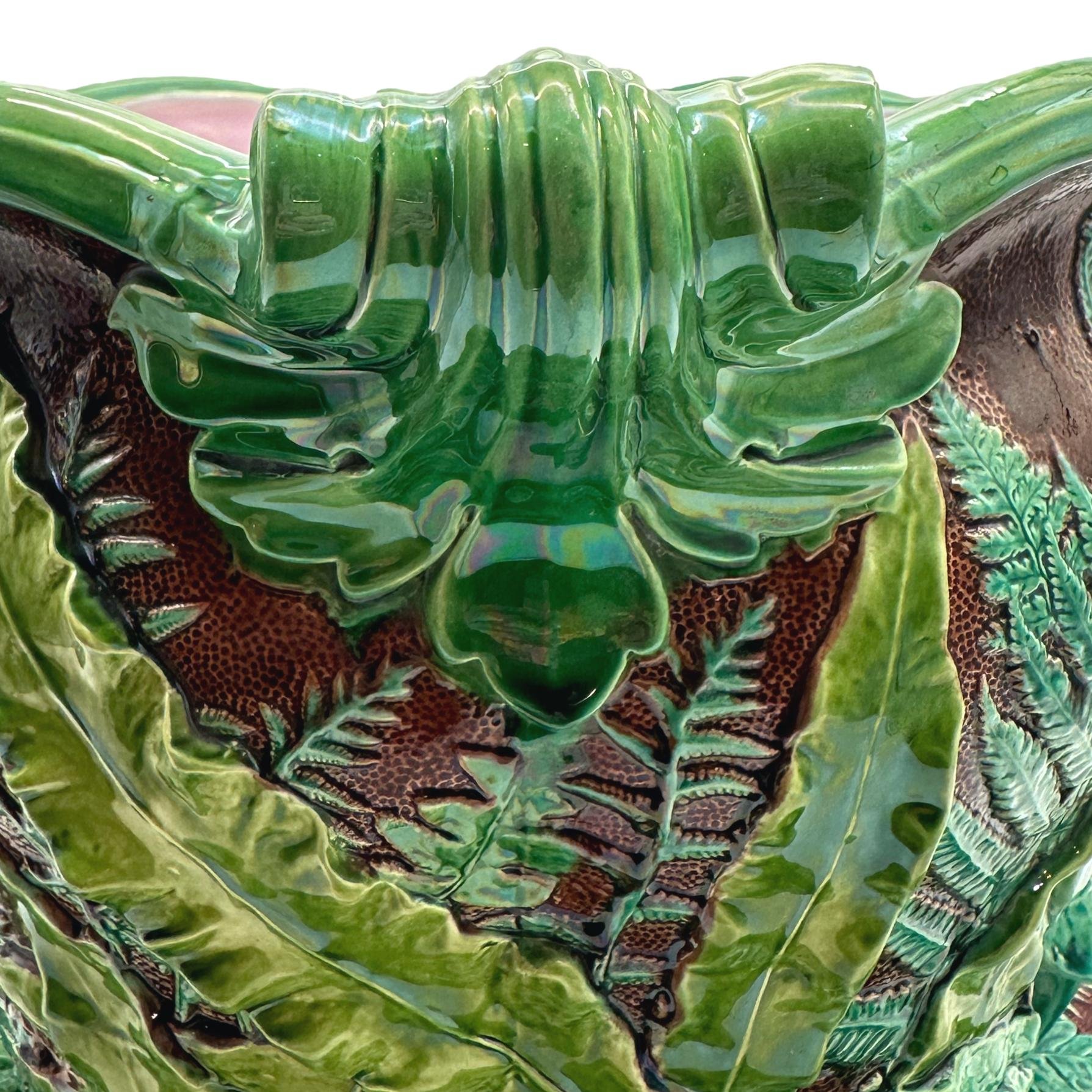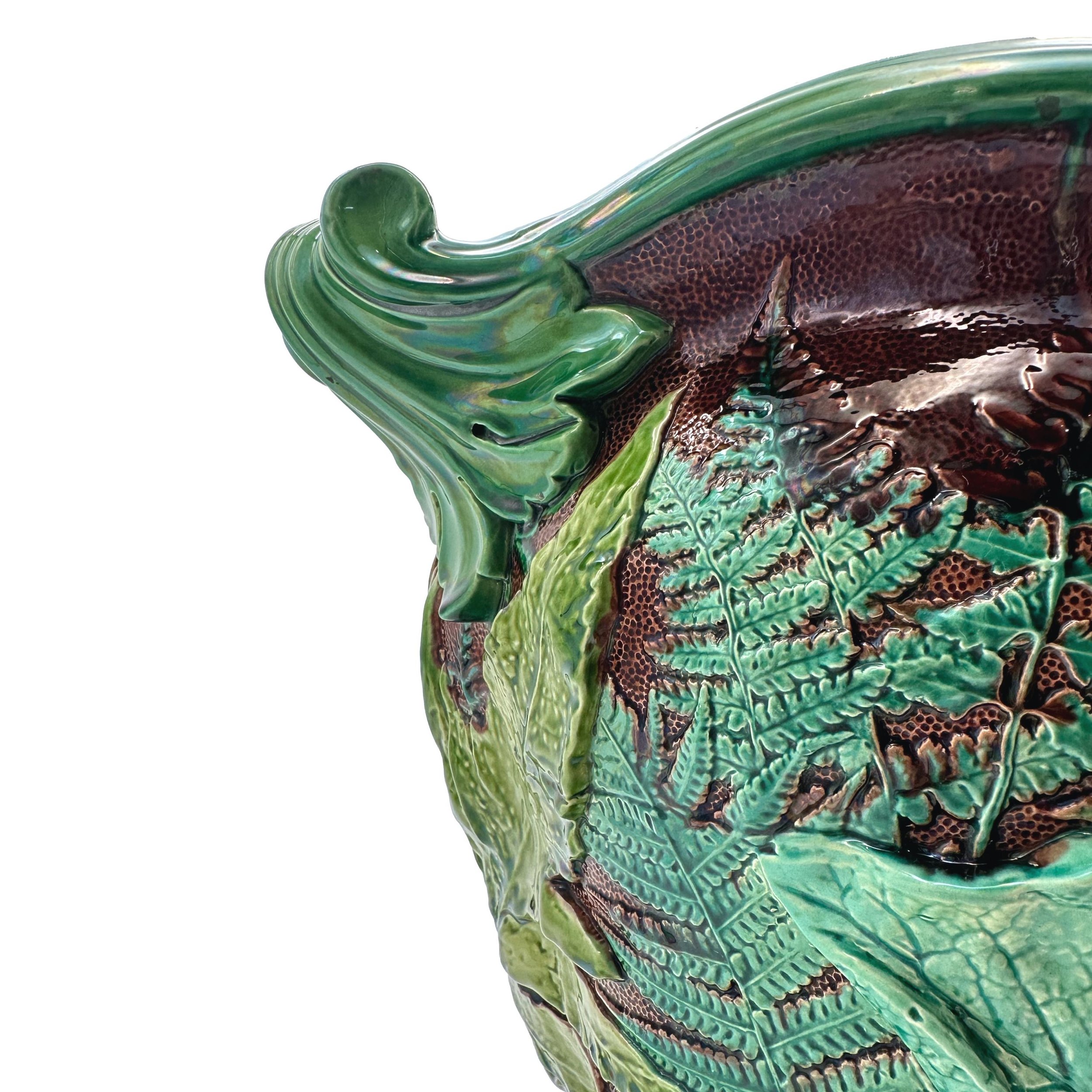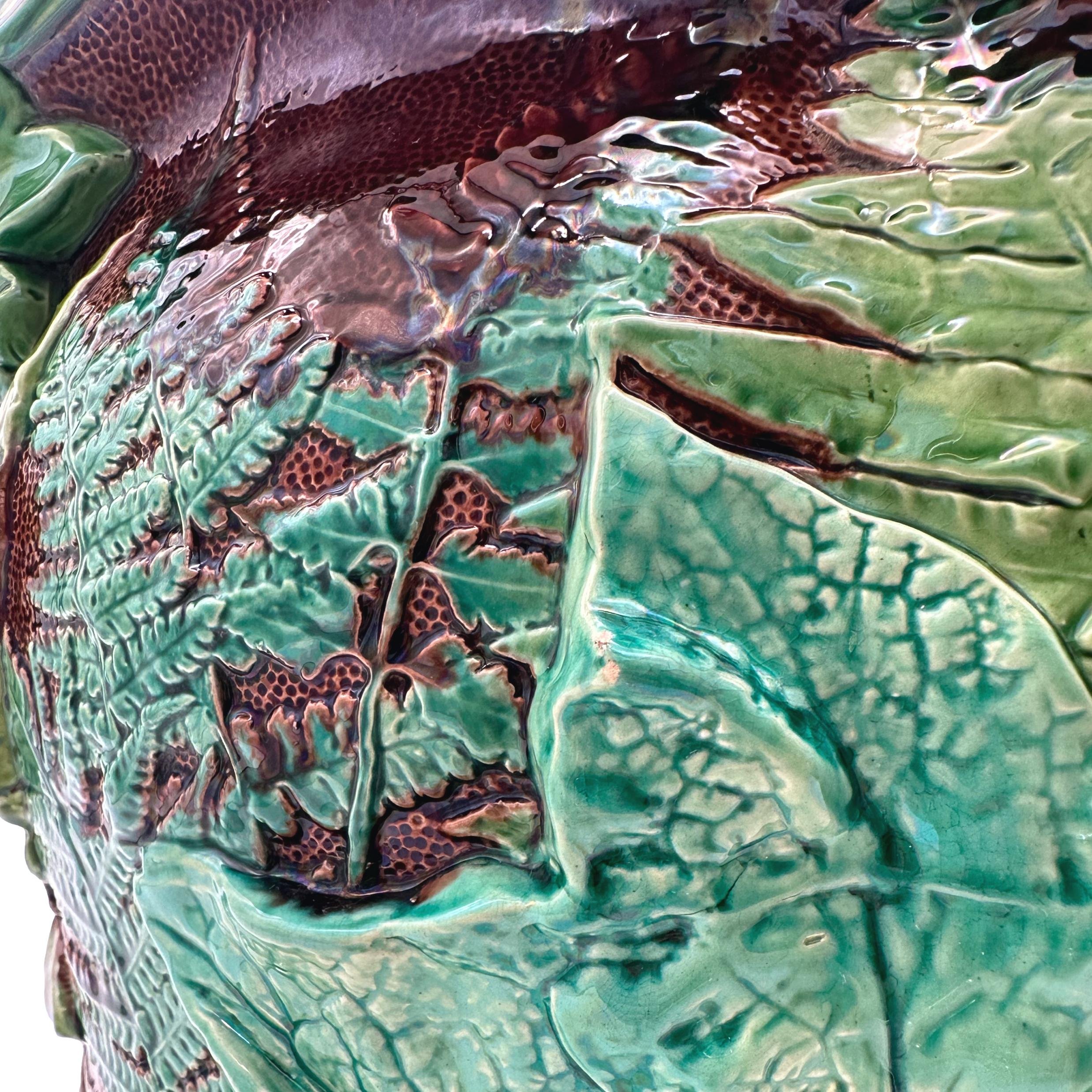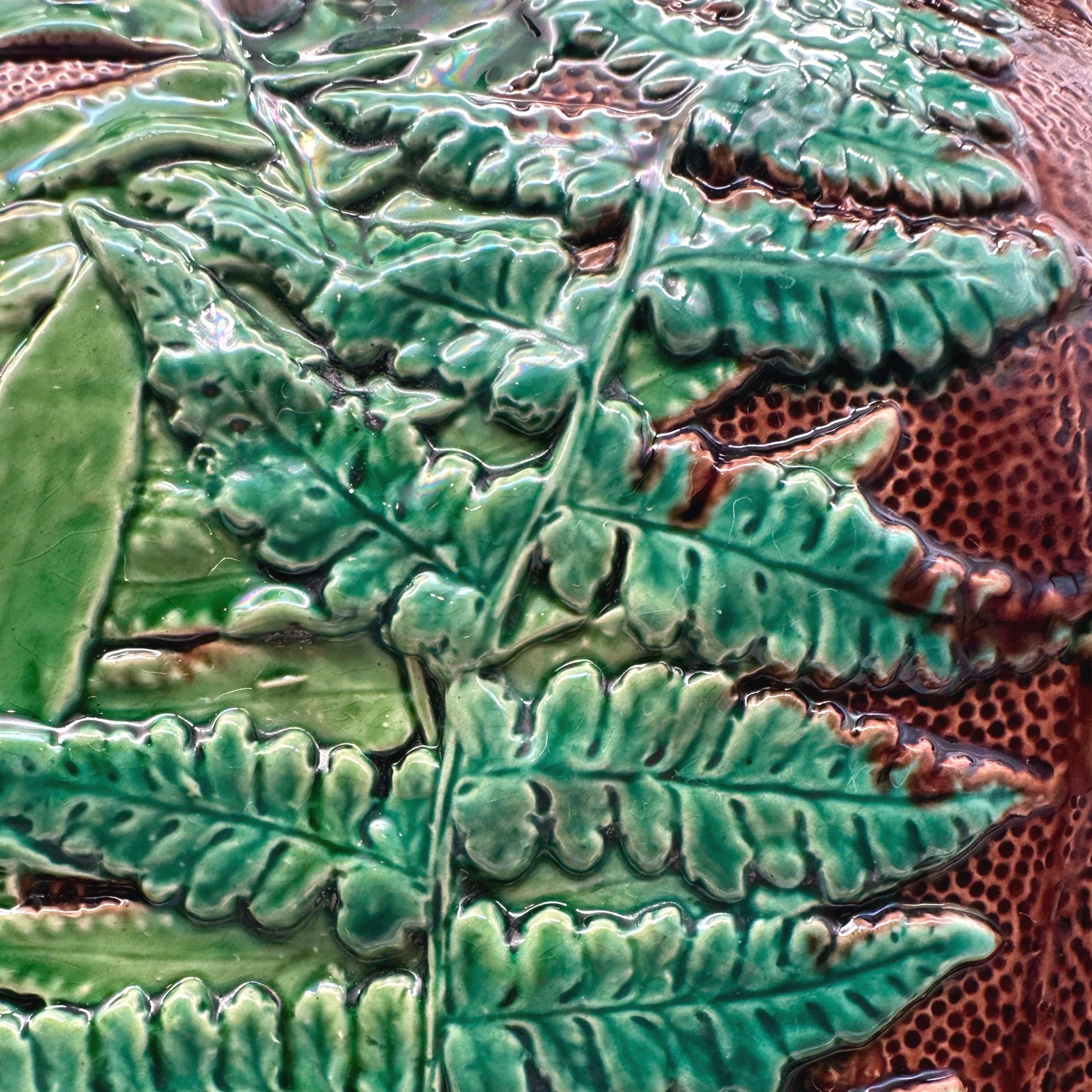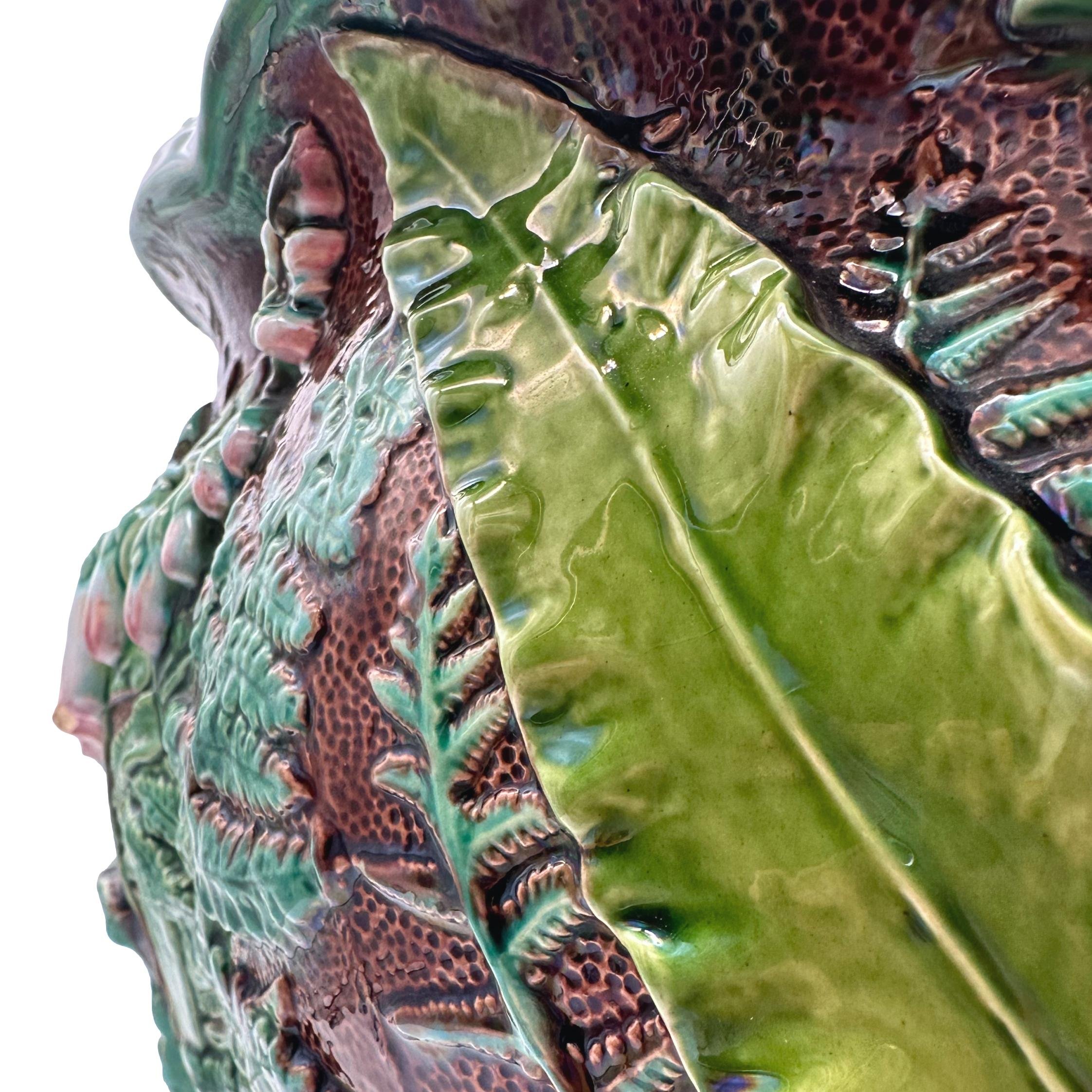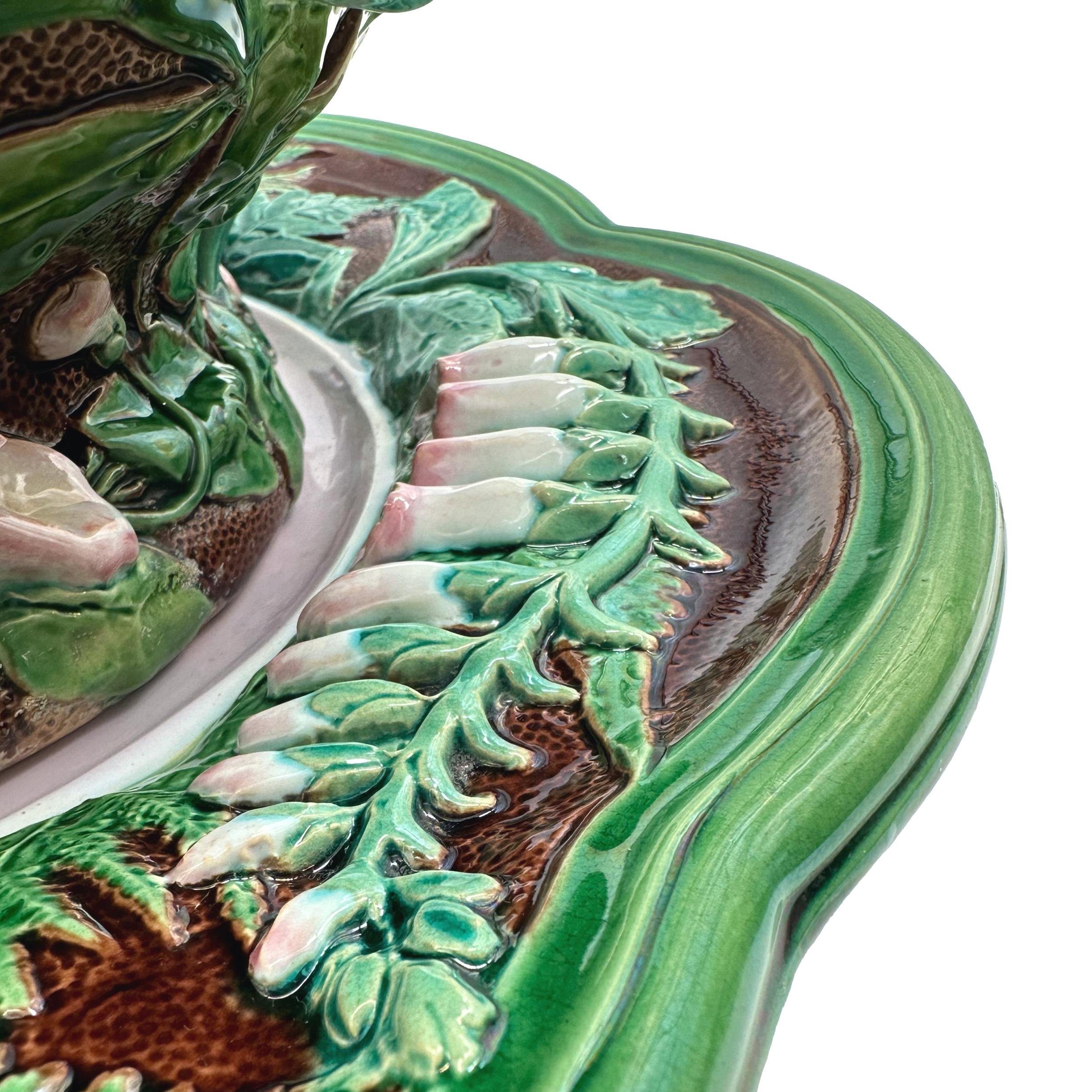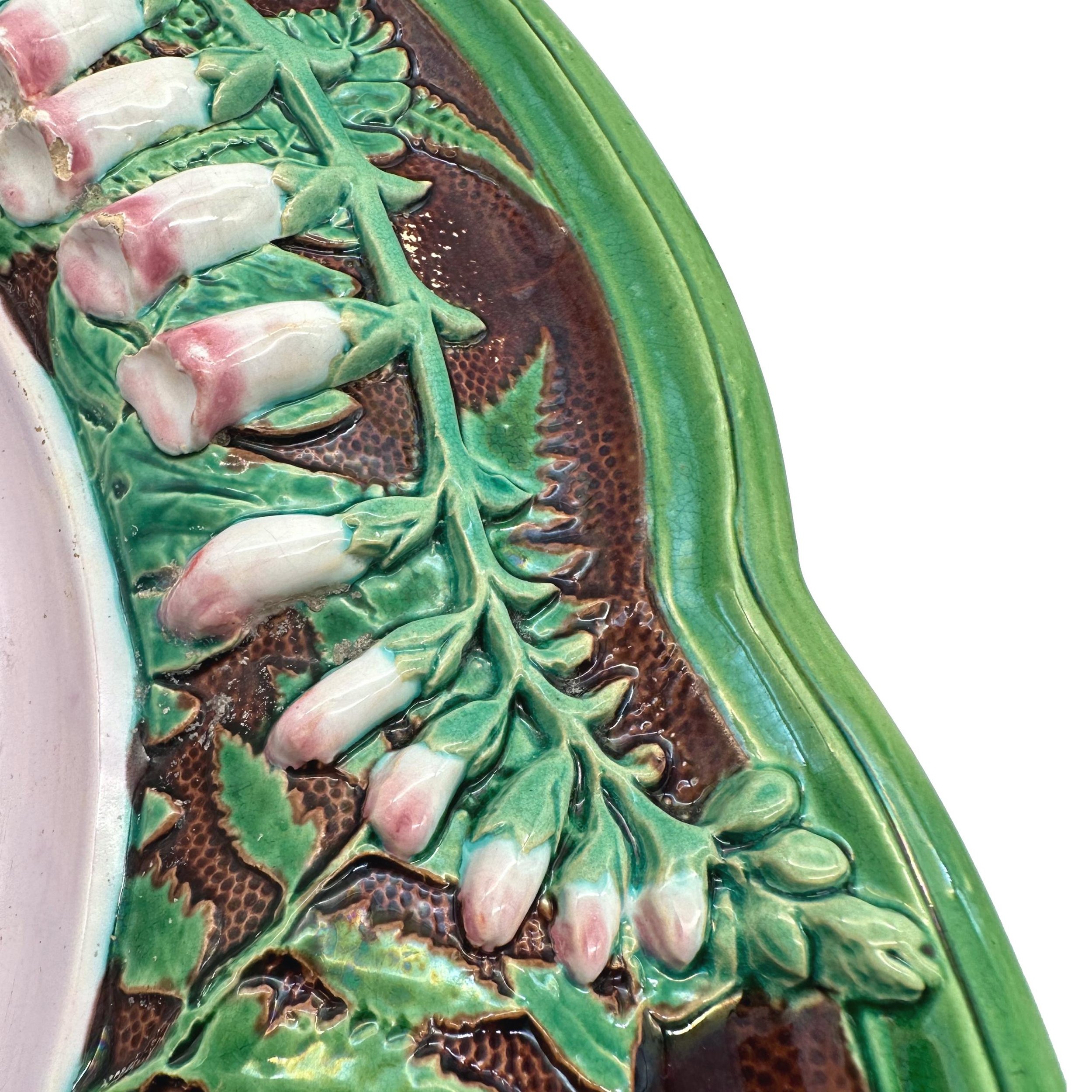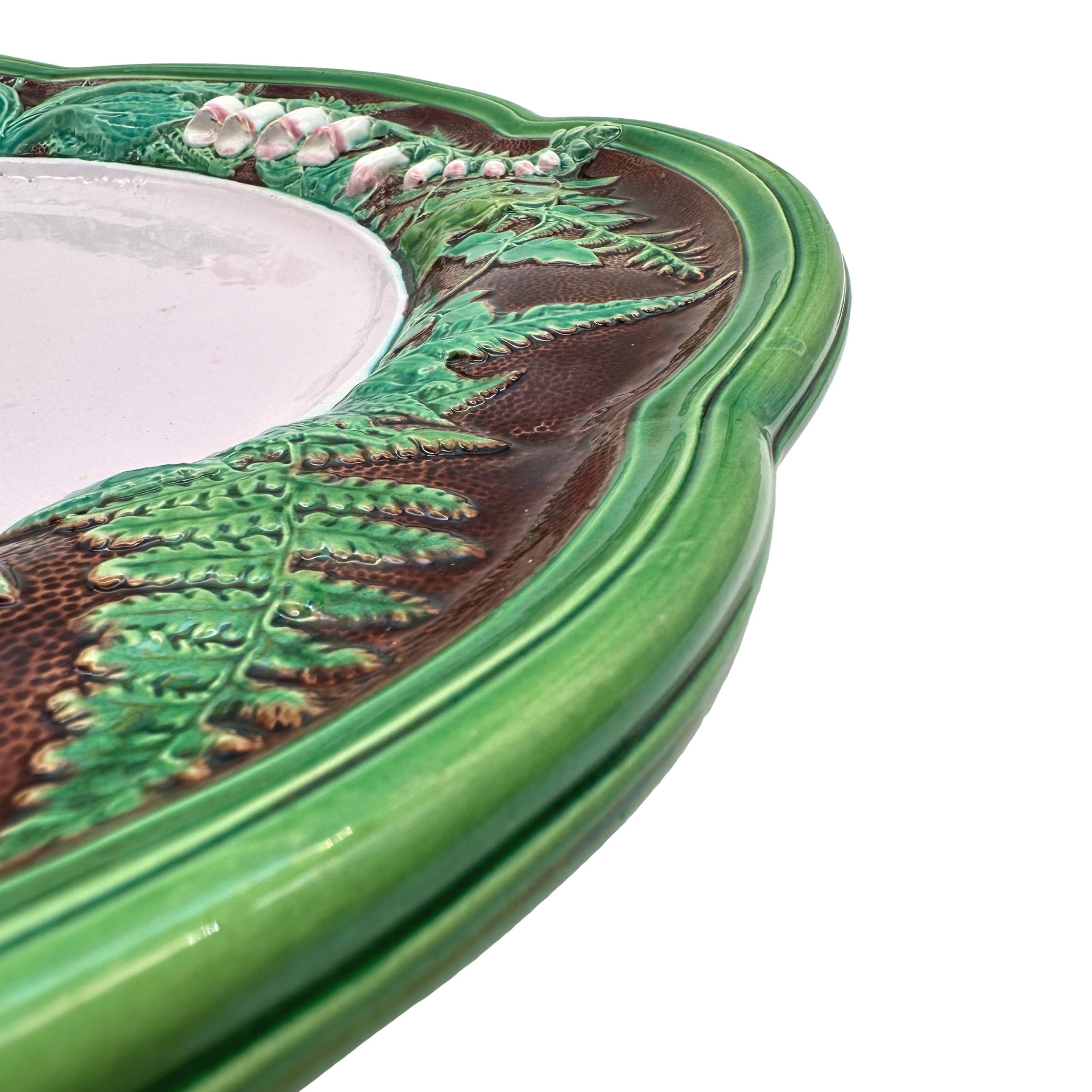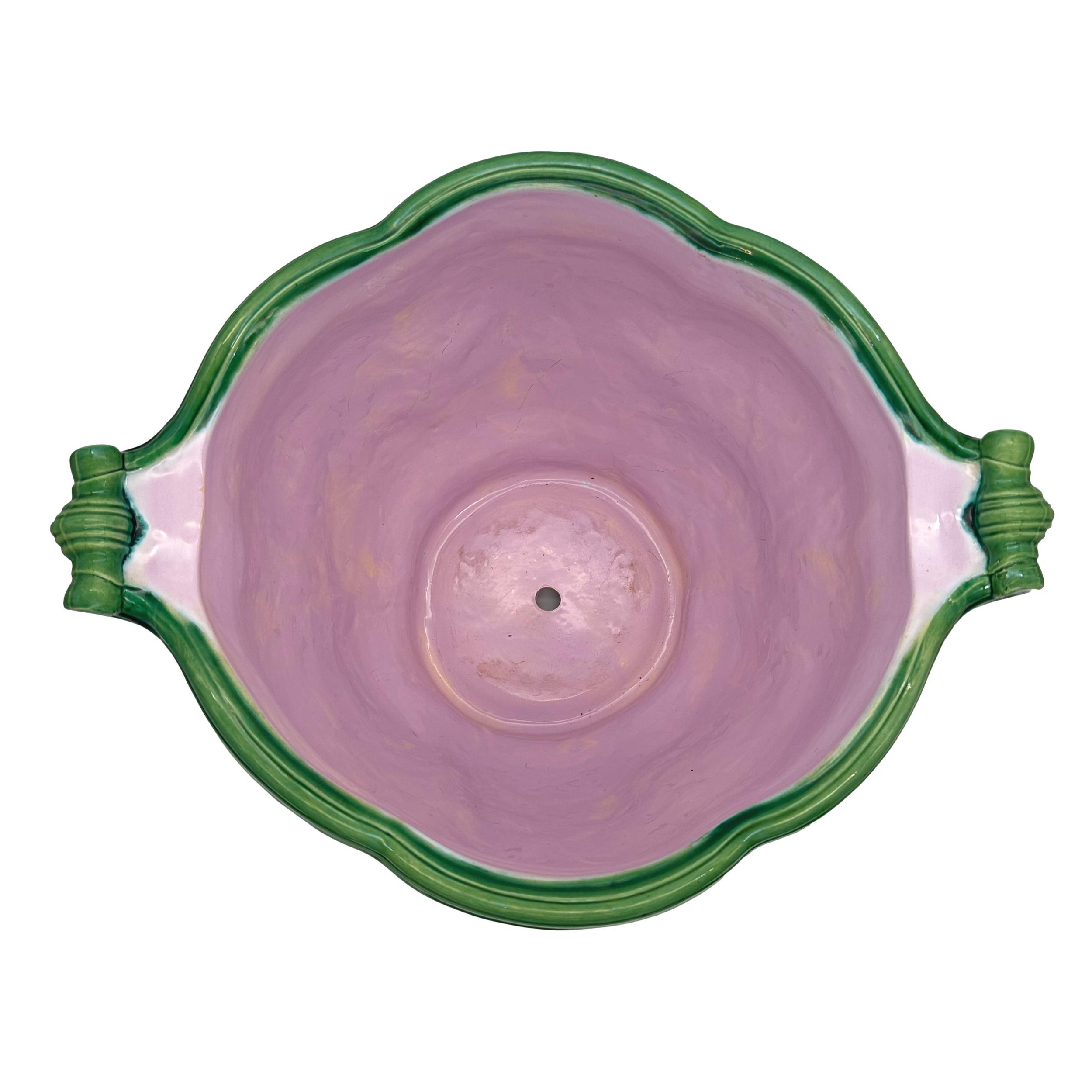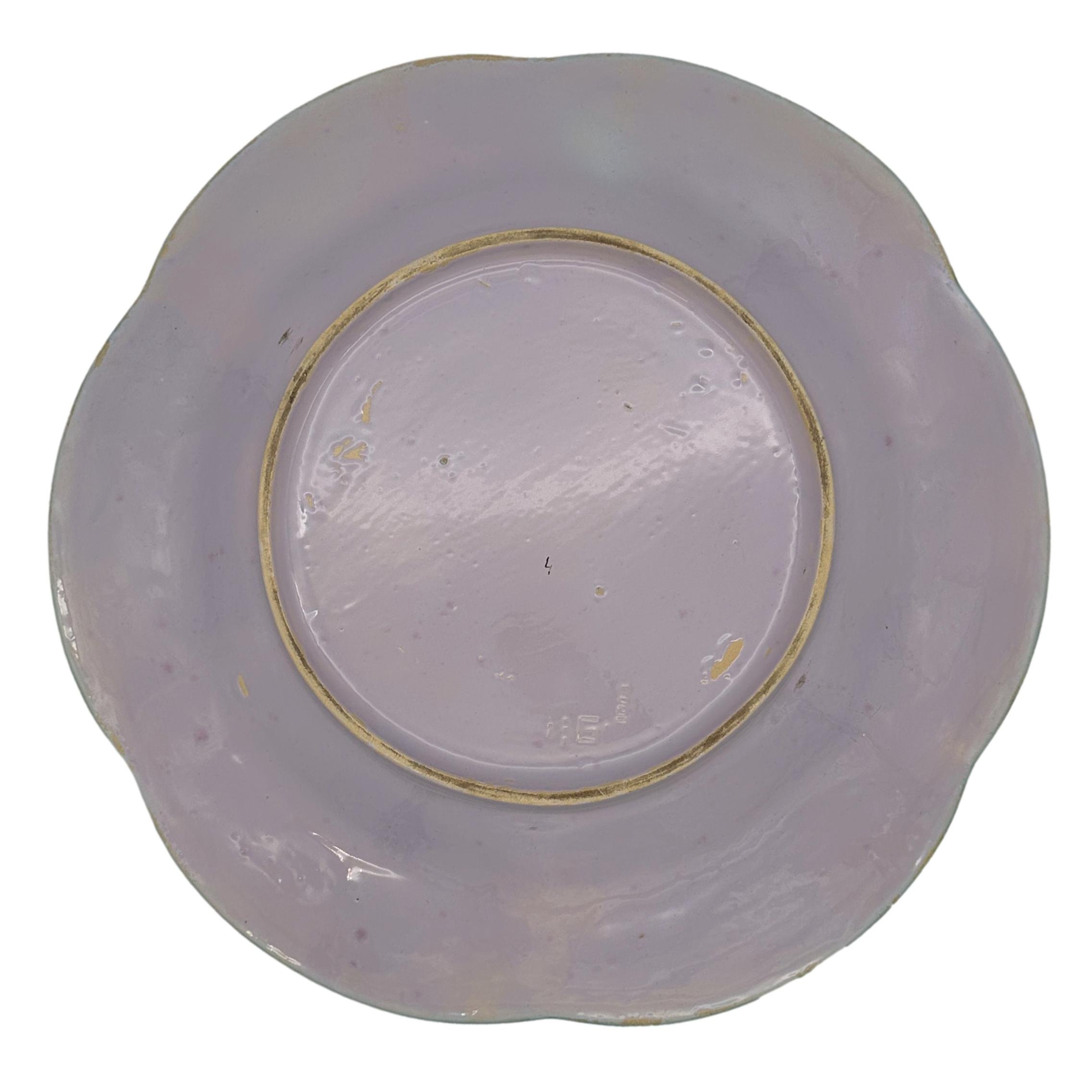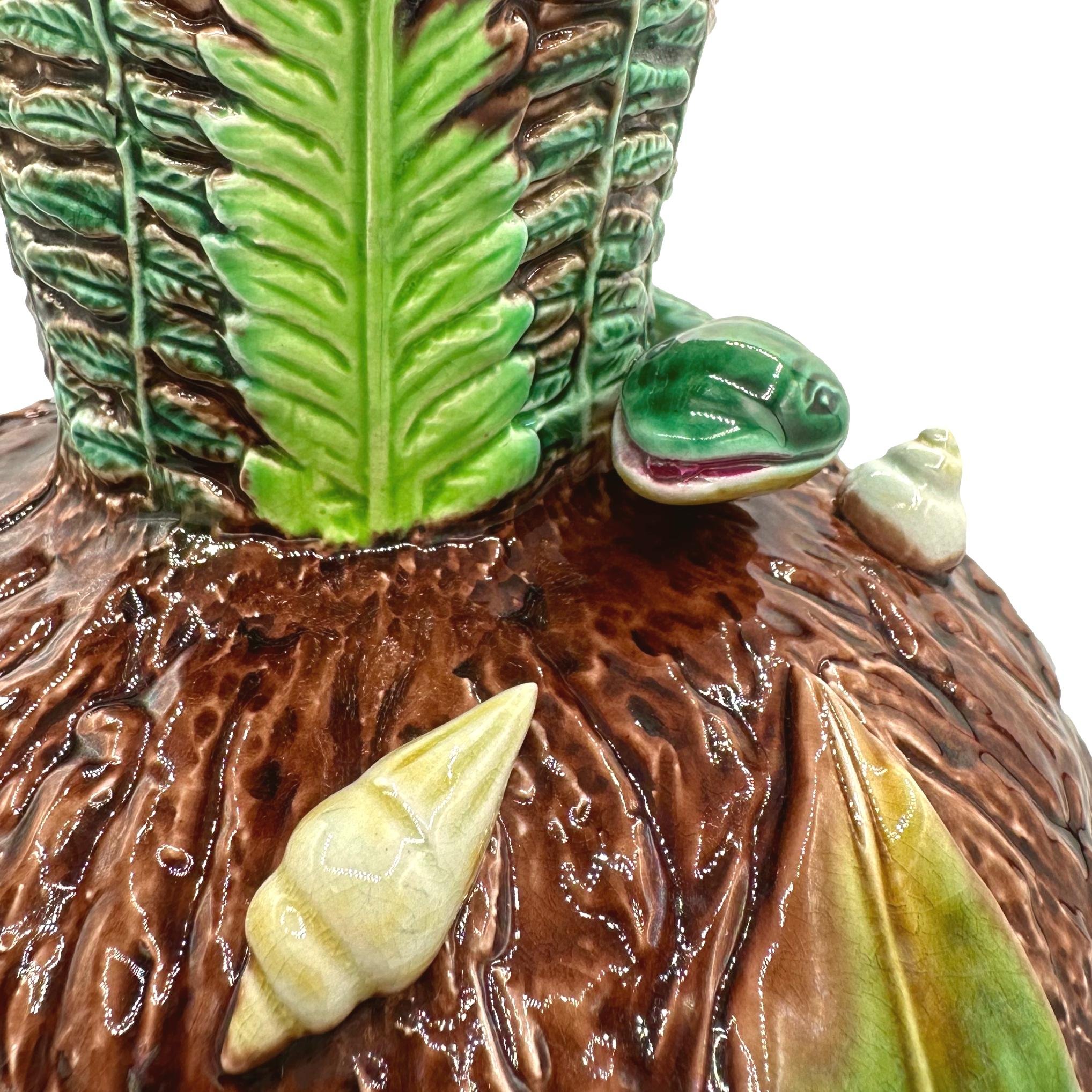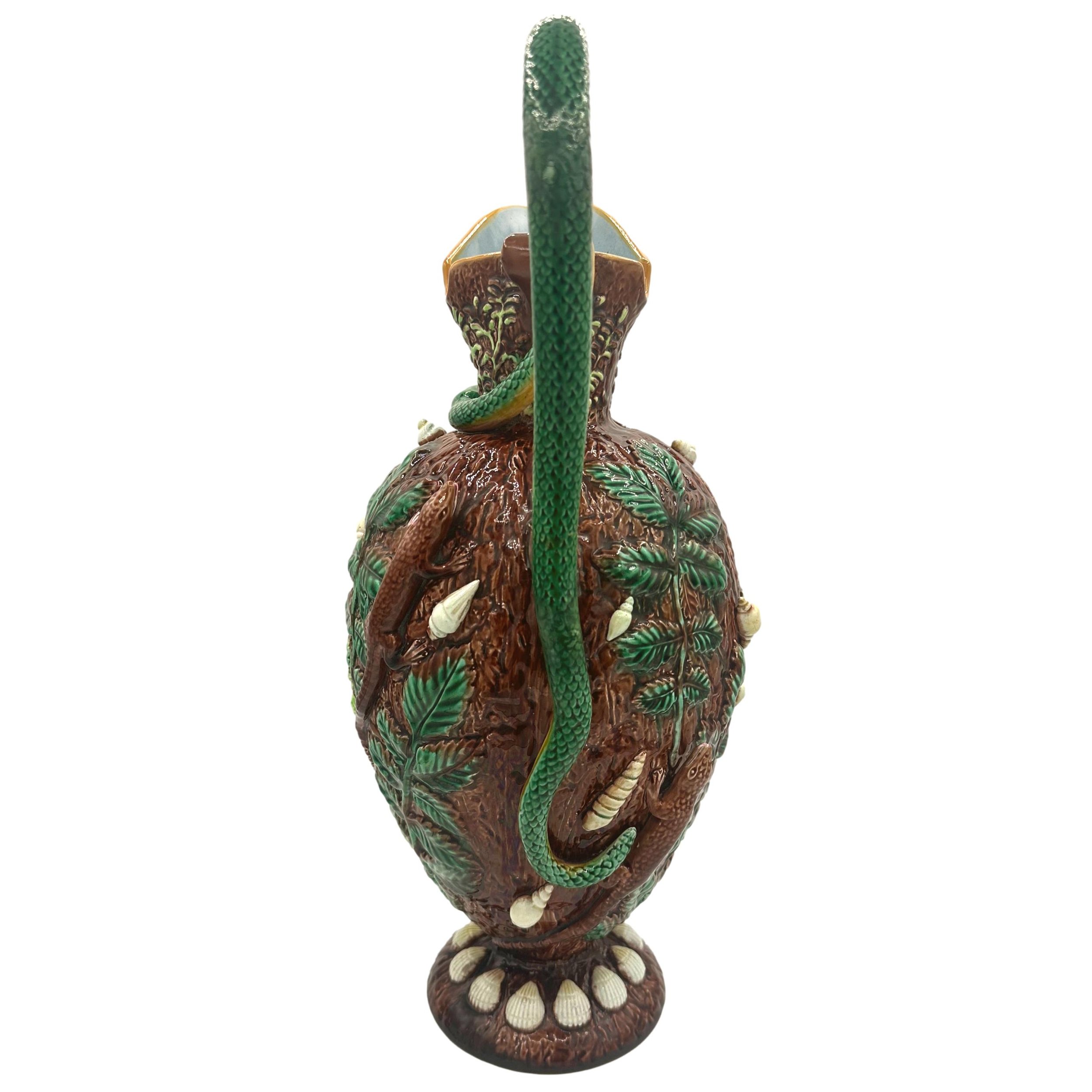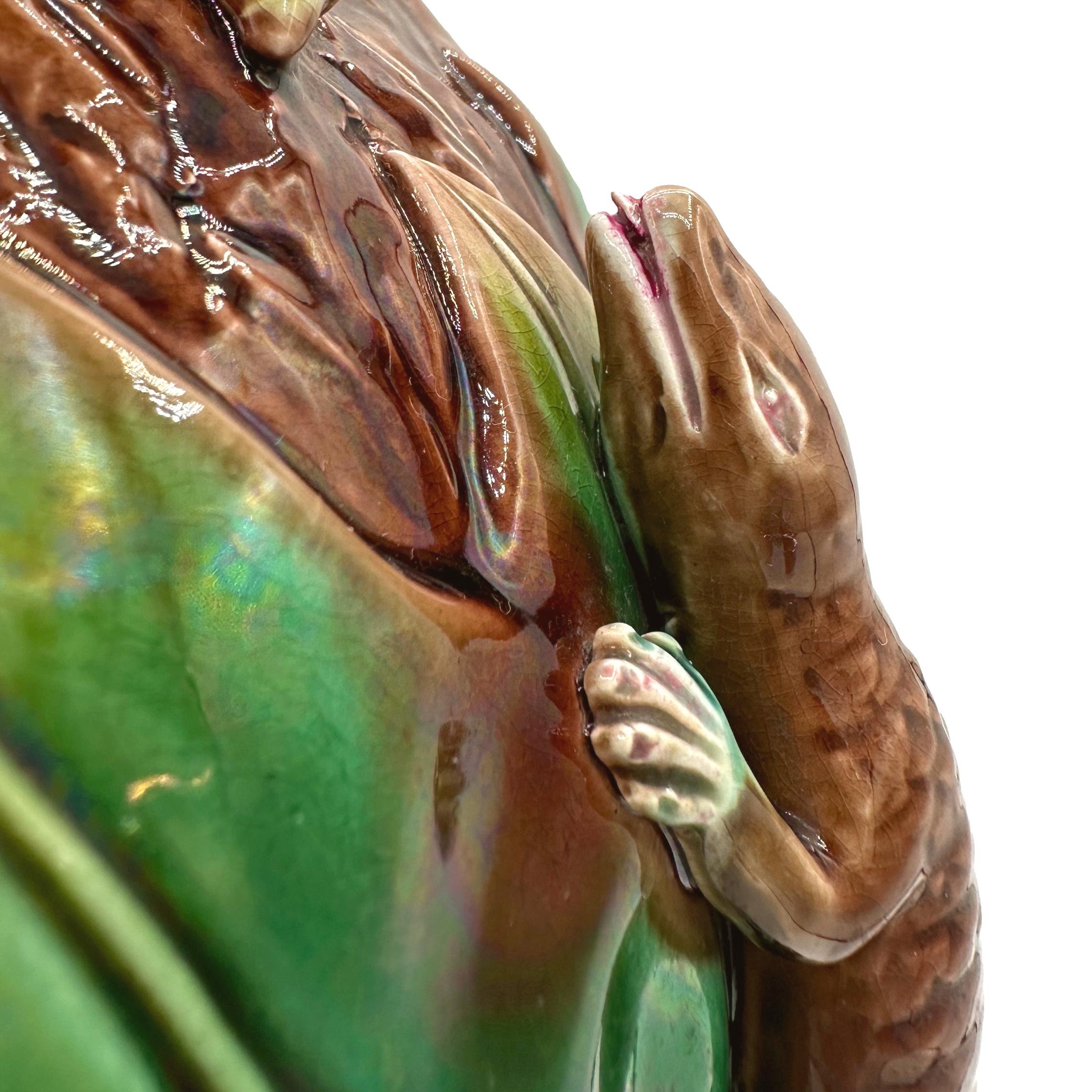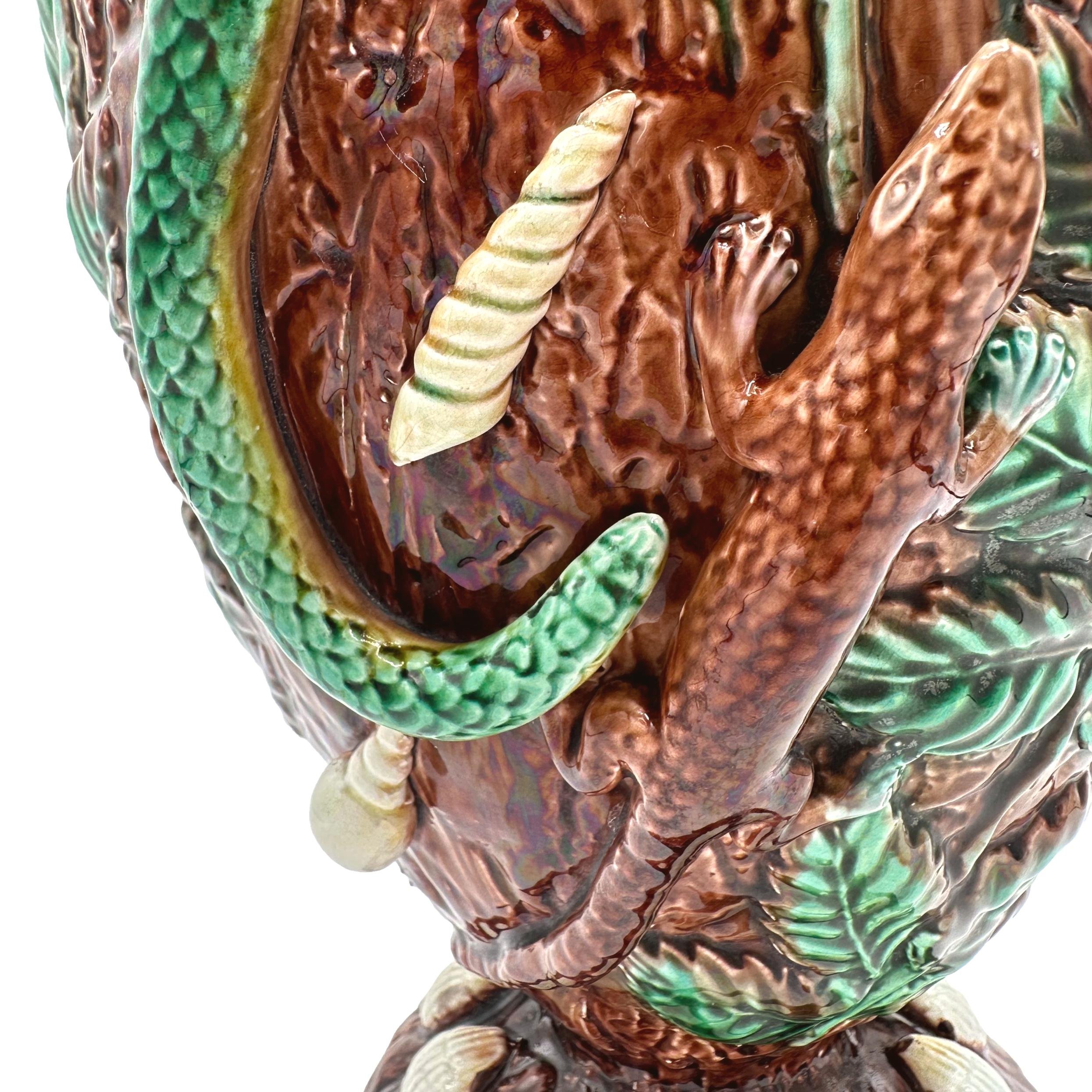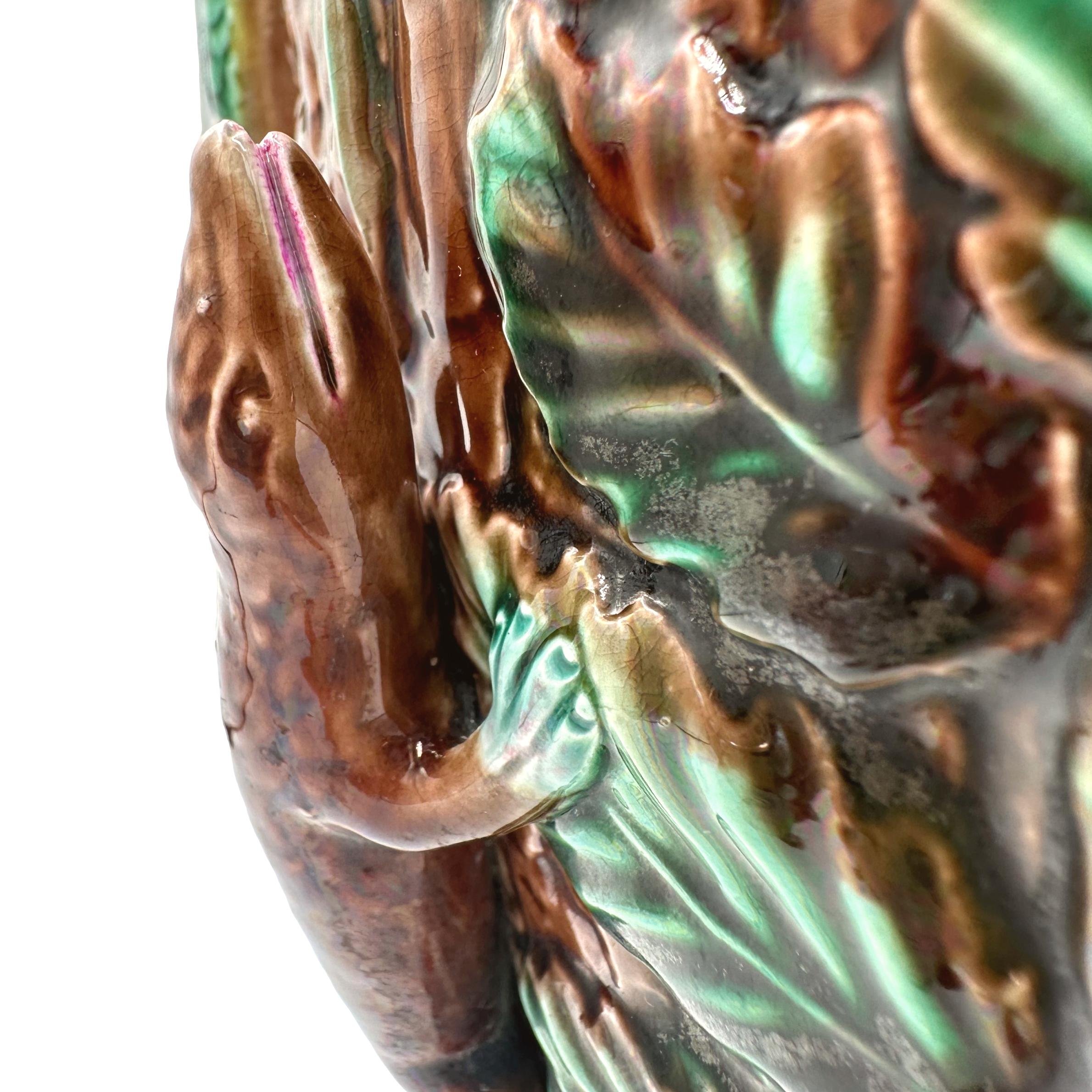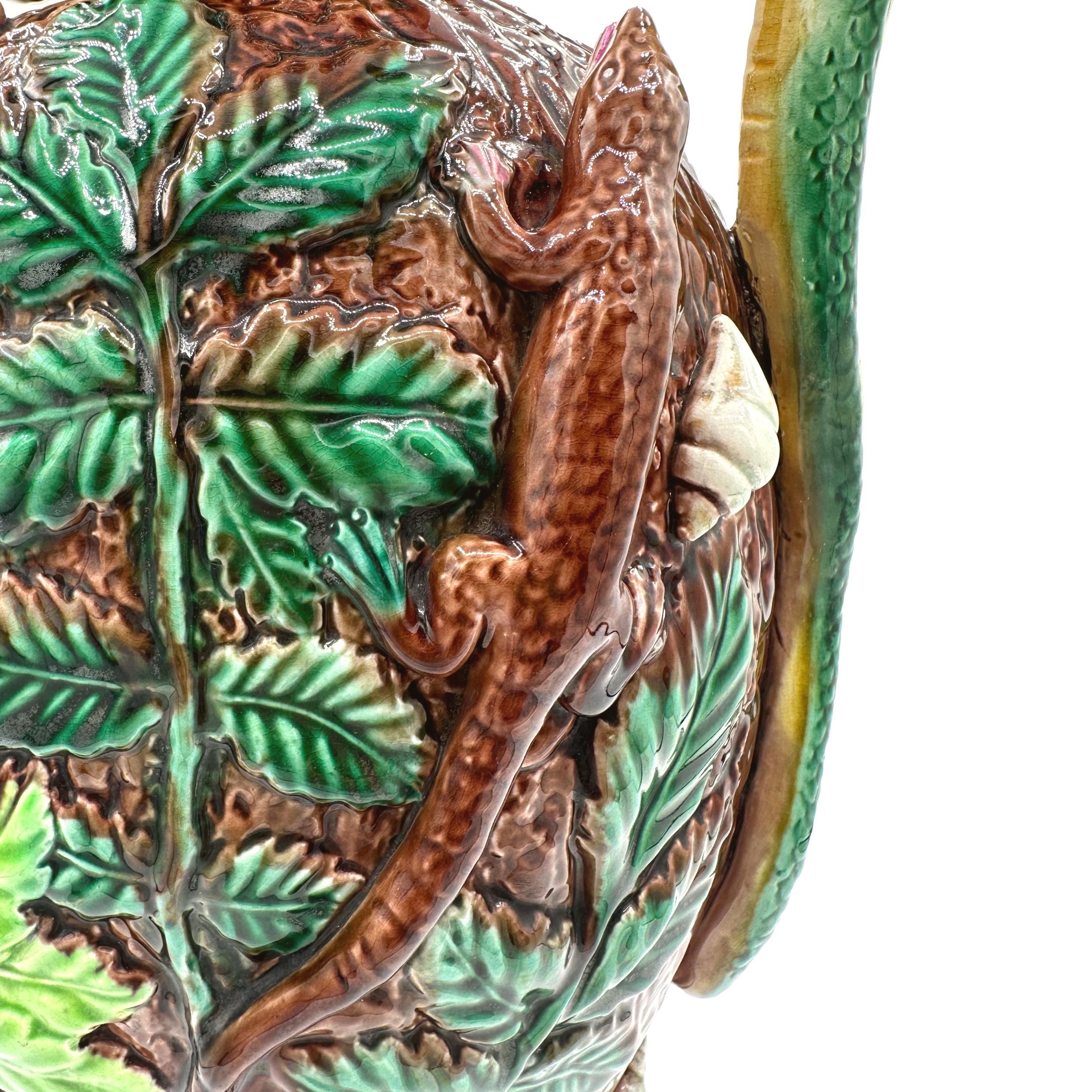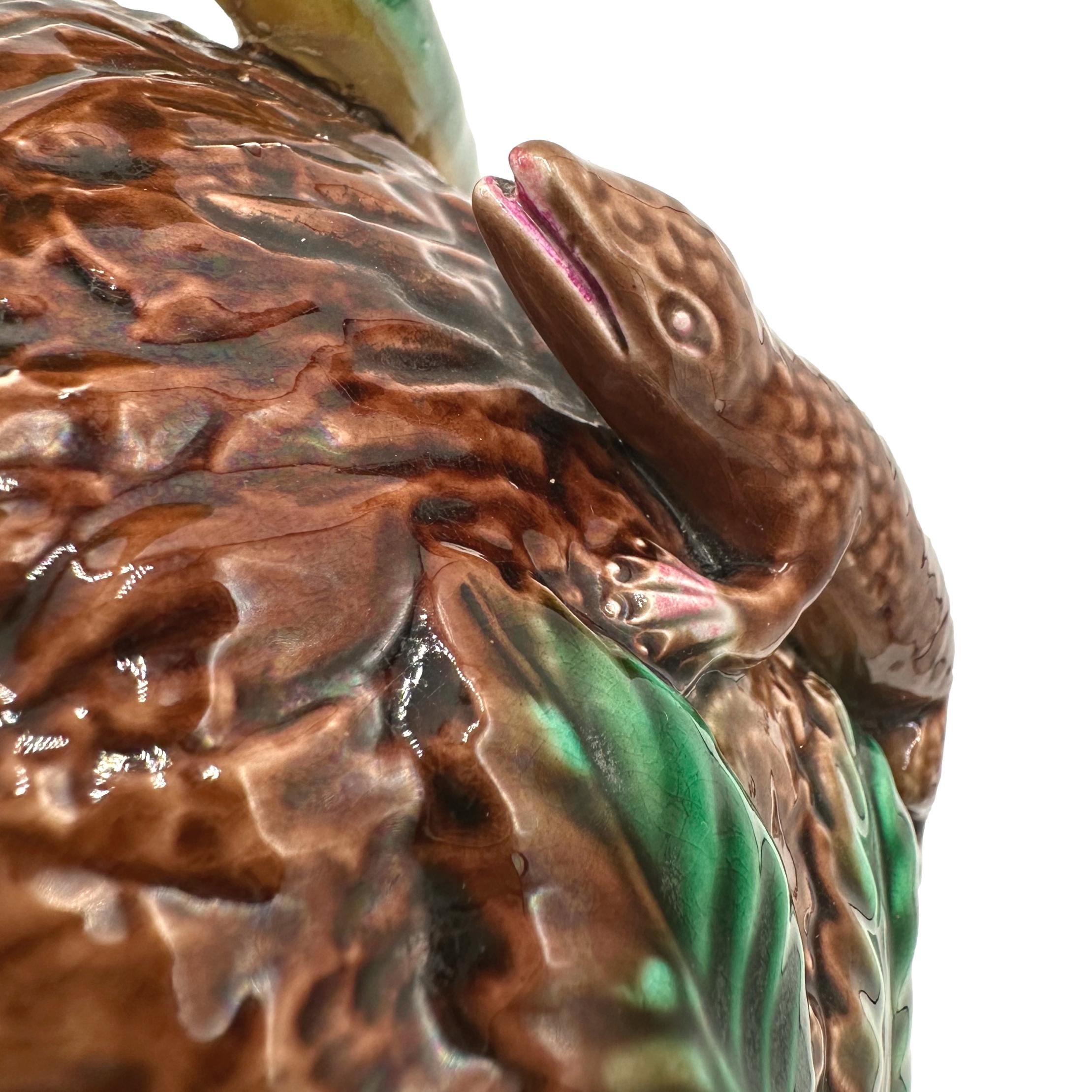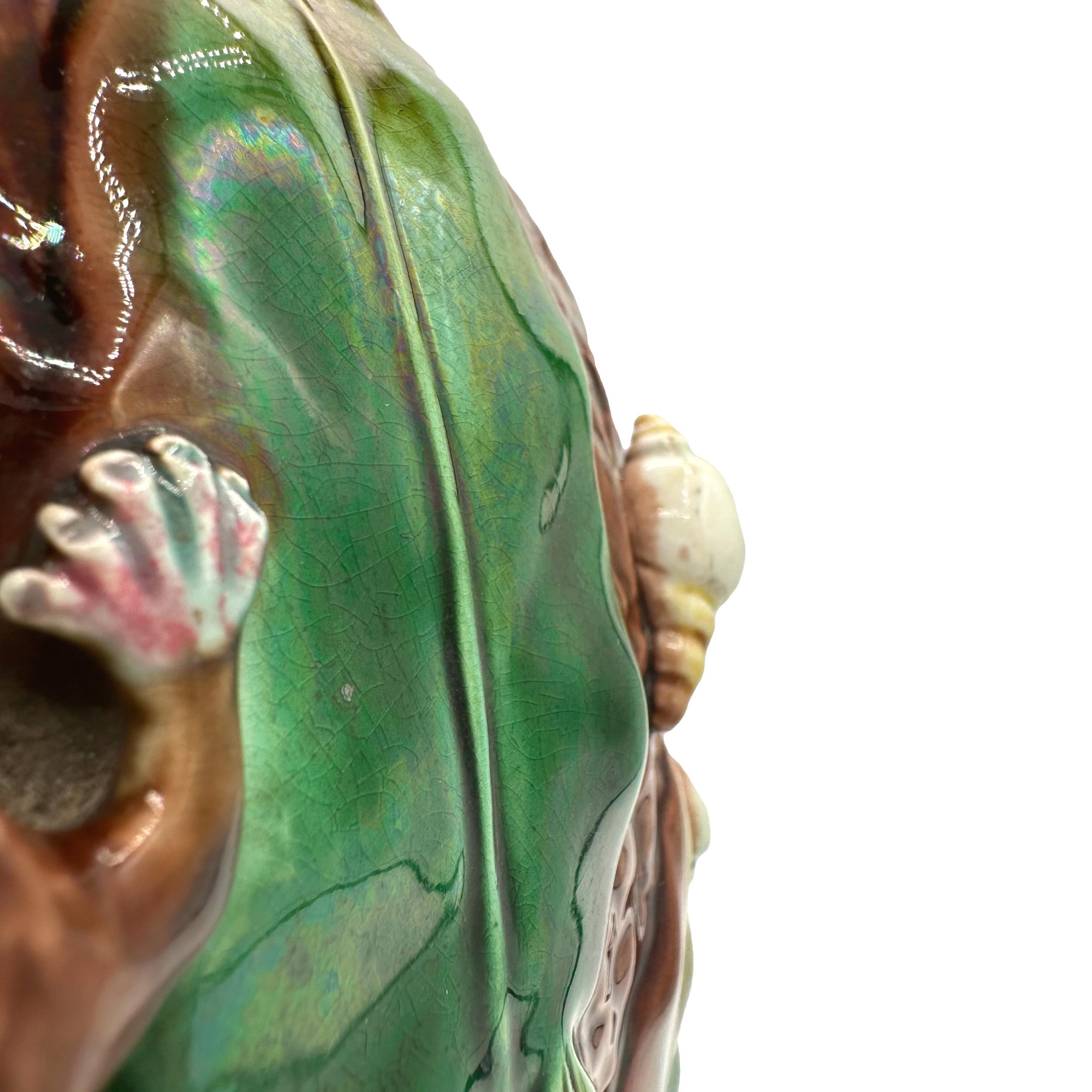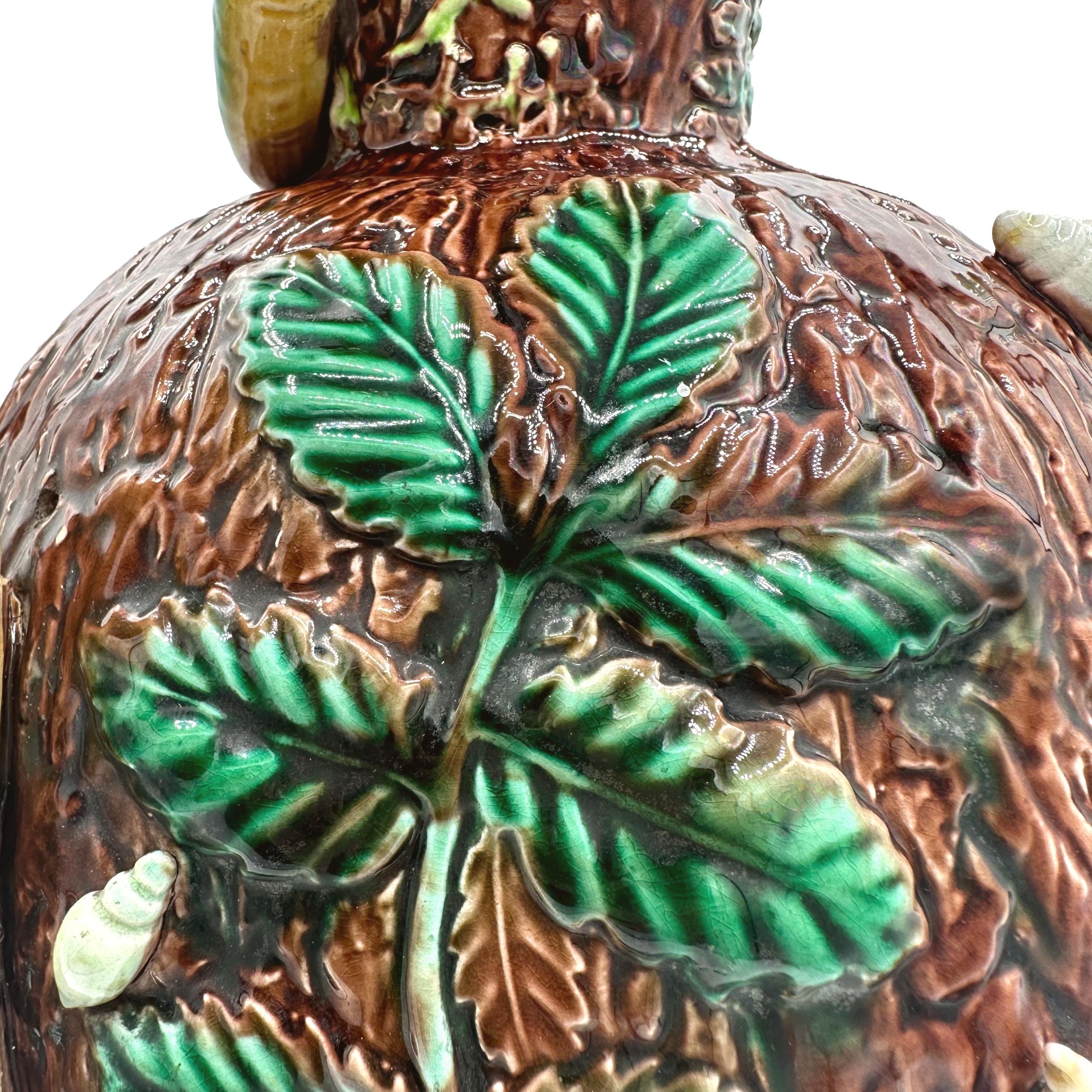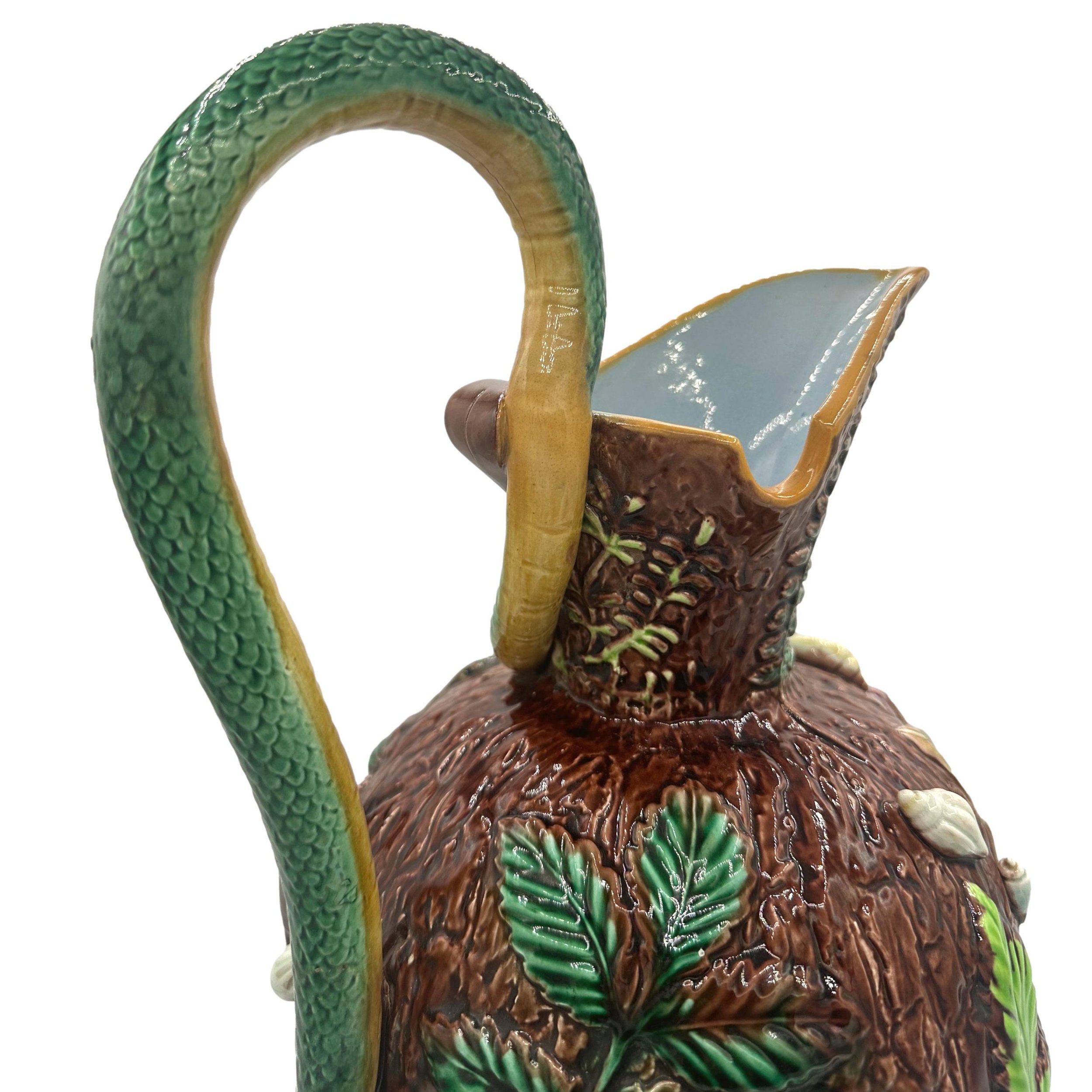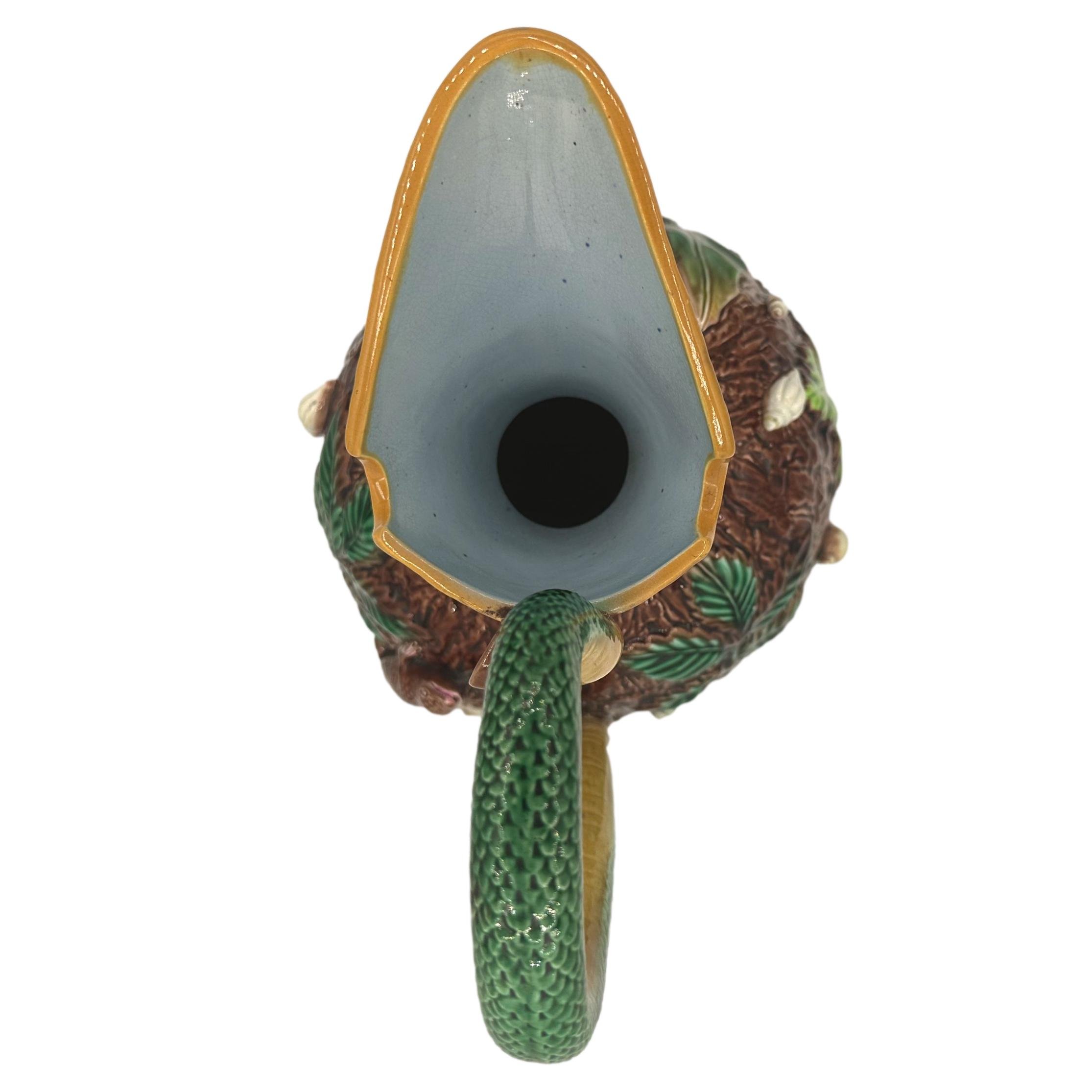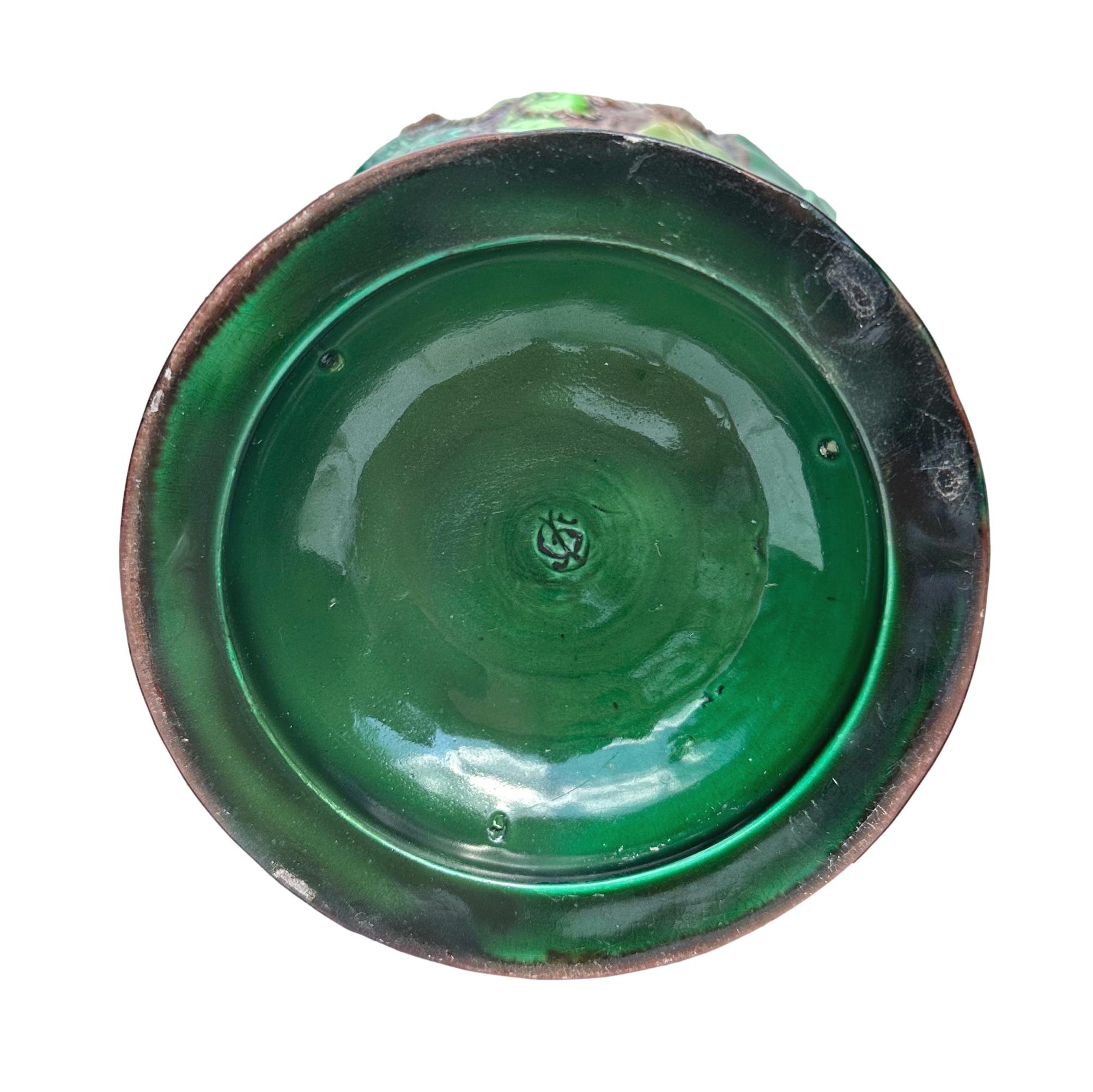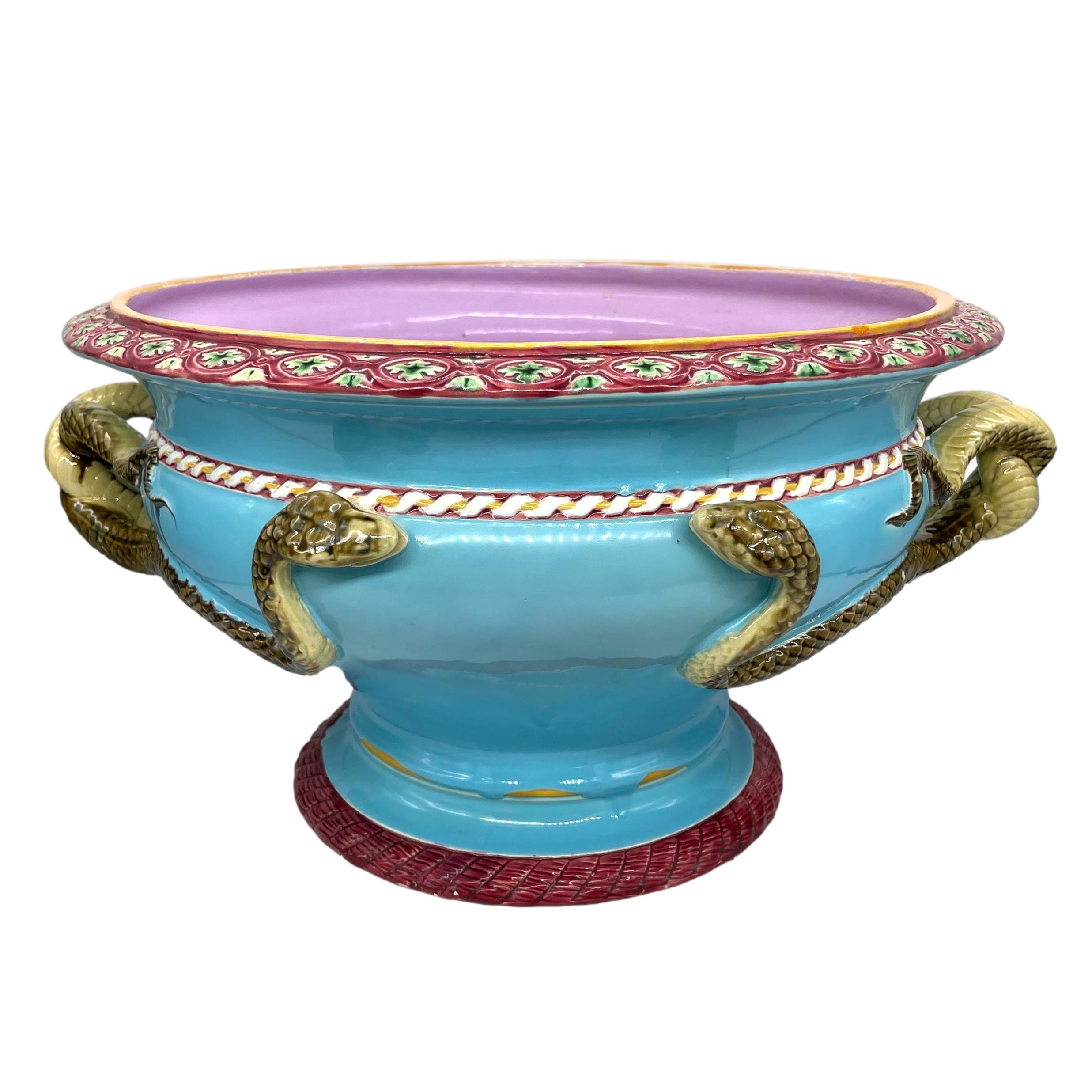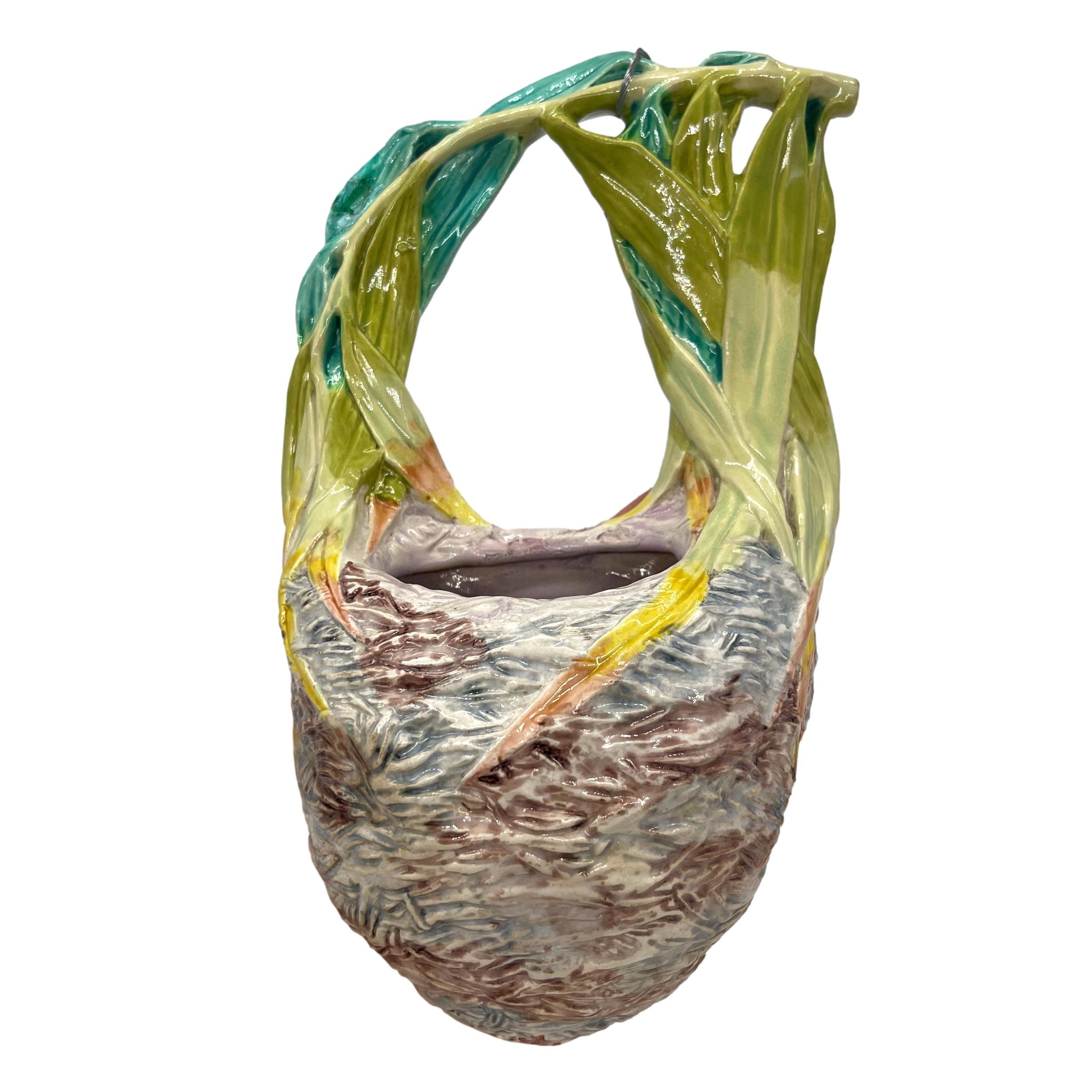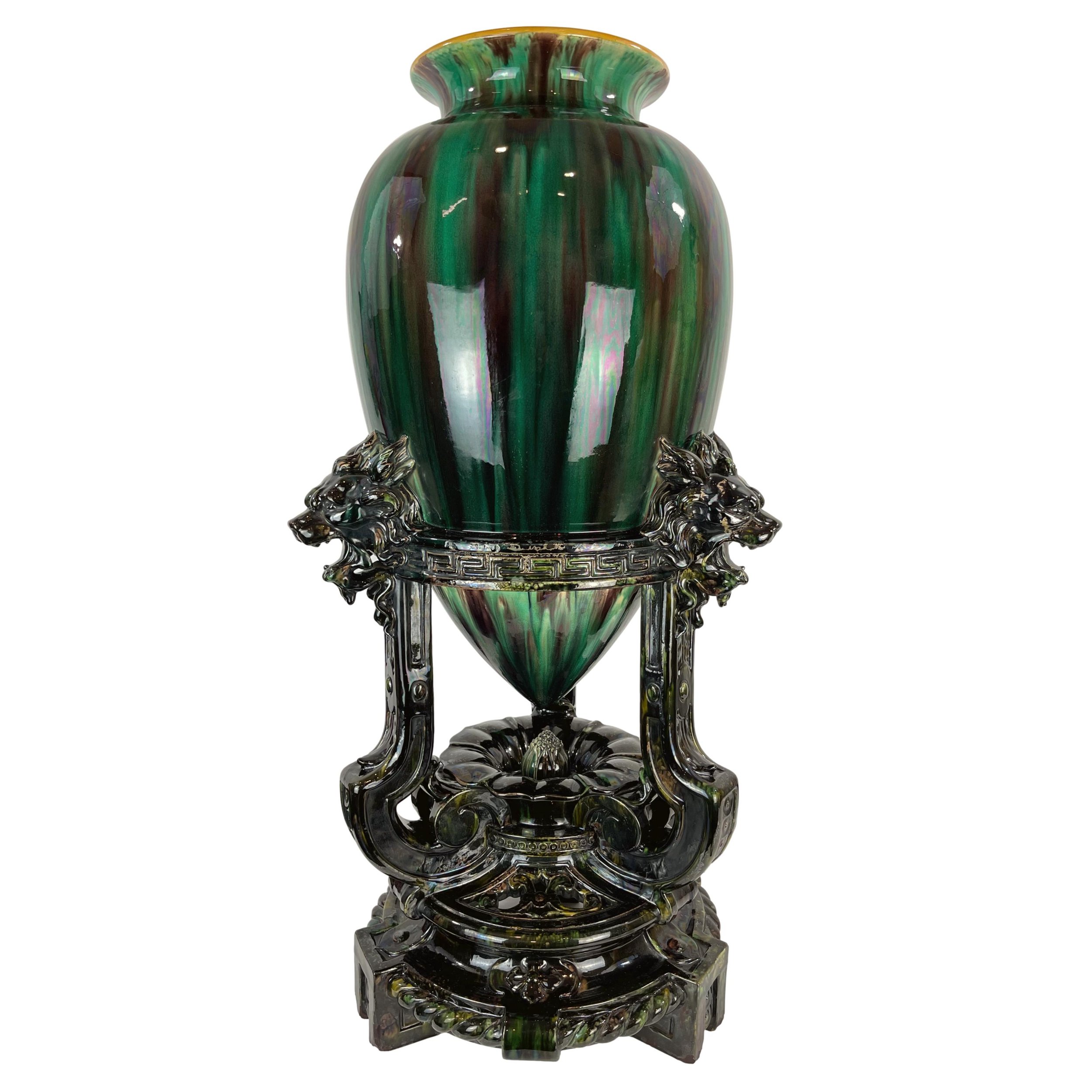 Image 1 of 19
Image 1 of 19

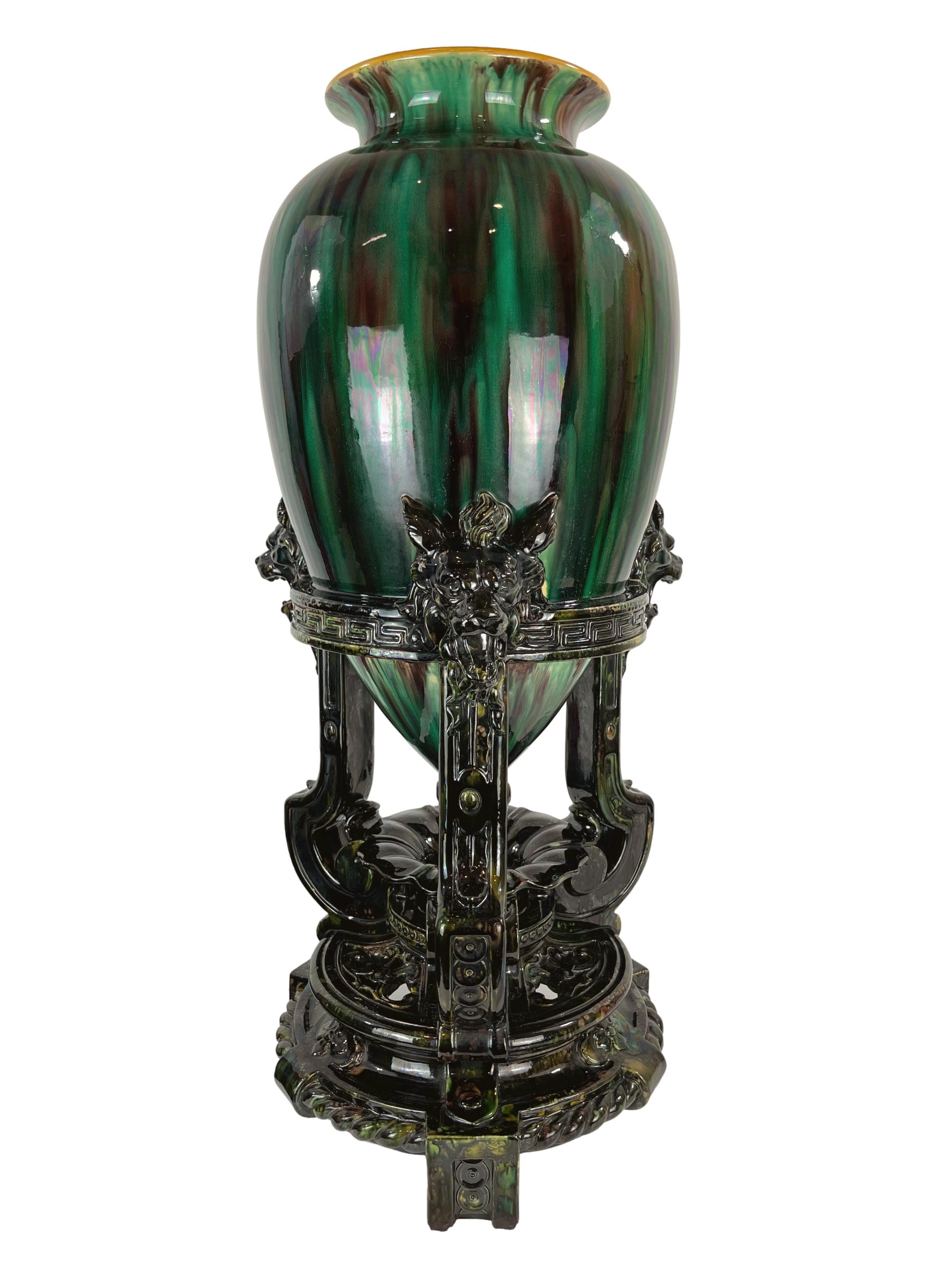 Image 2 of 19
Image 2 of 19

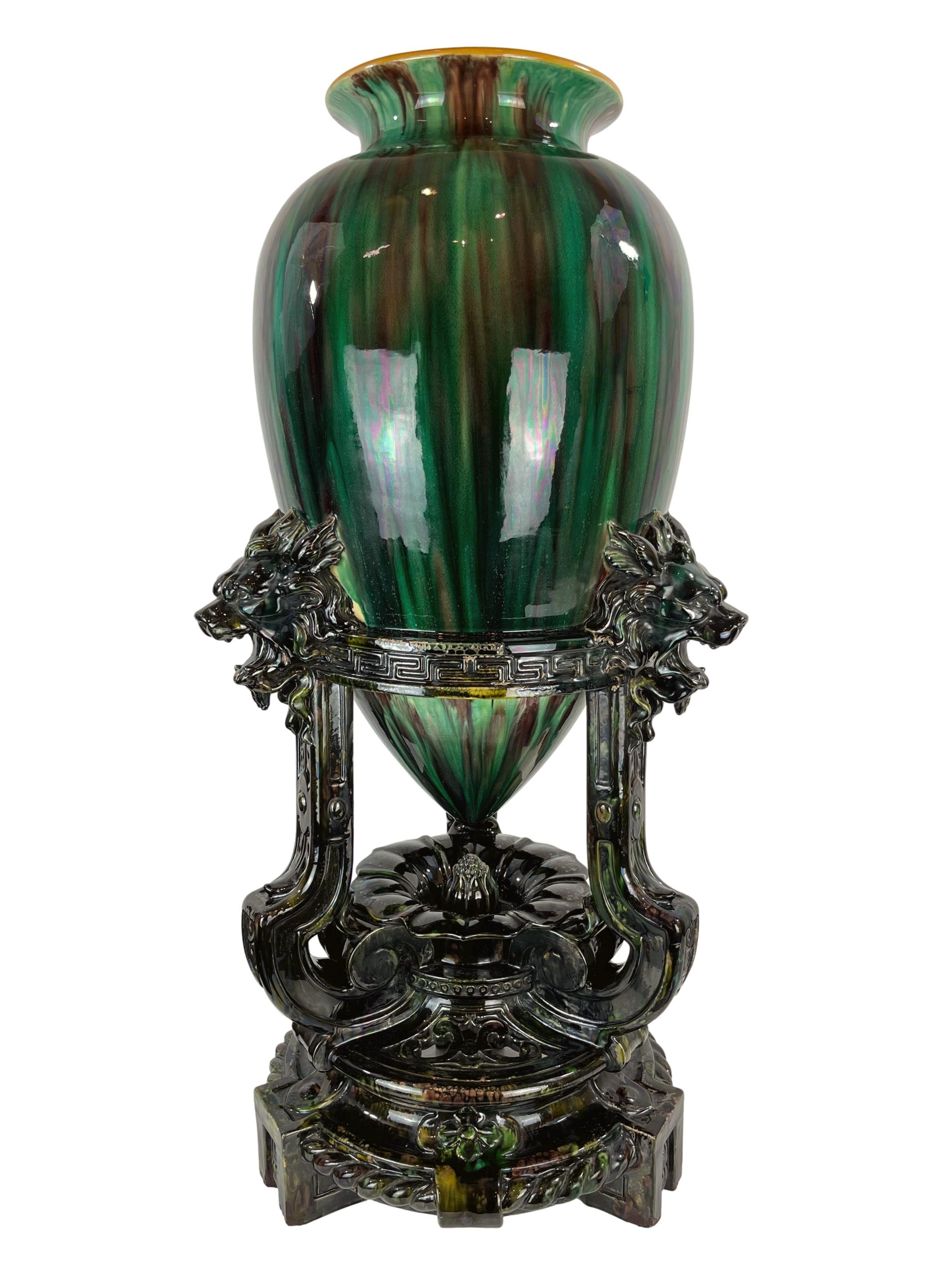 Image 3 of 19
Image 3 of 19

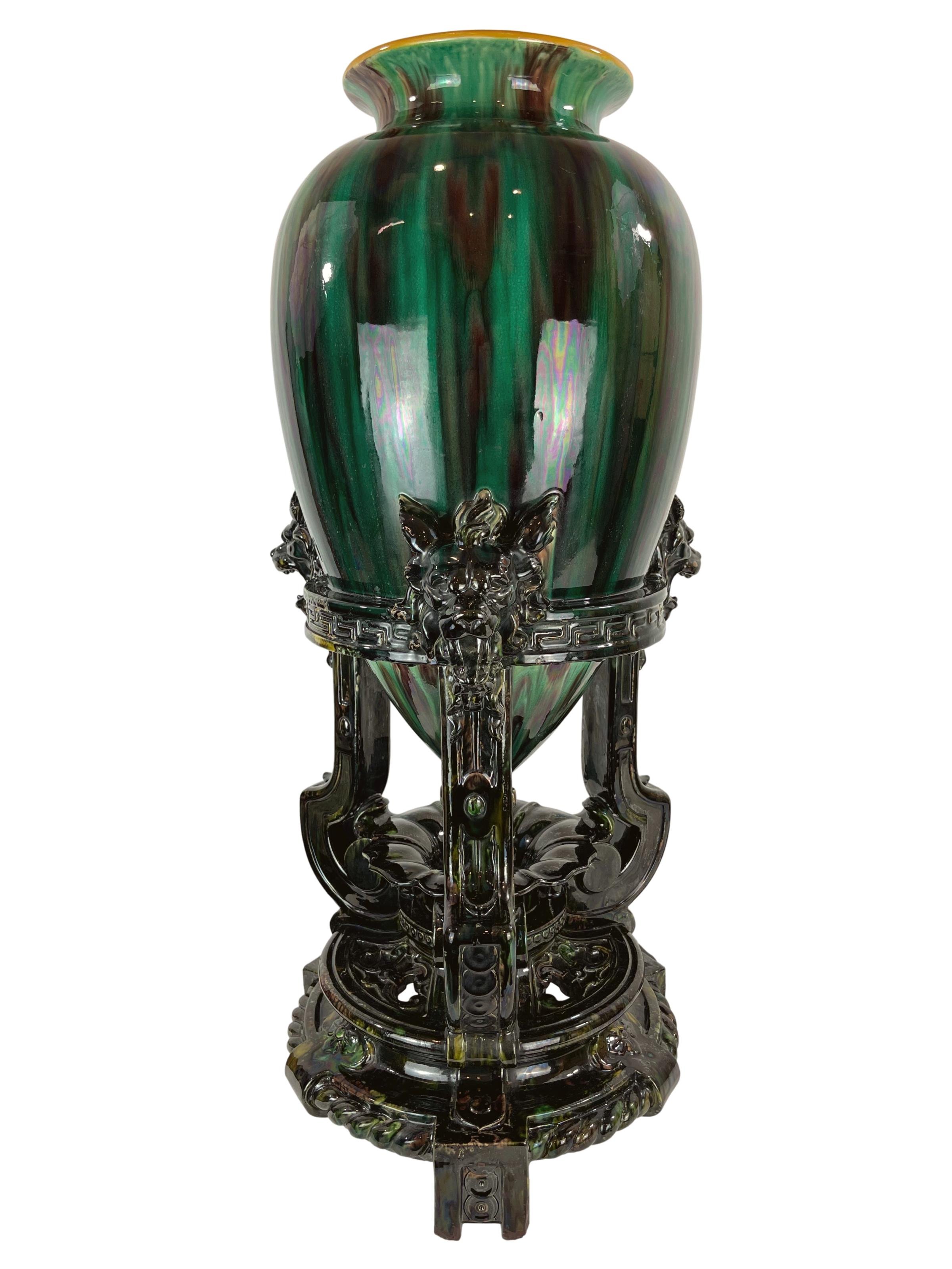 Image 4 of 19
Image 4 of 19

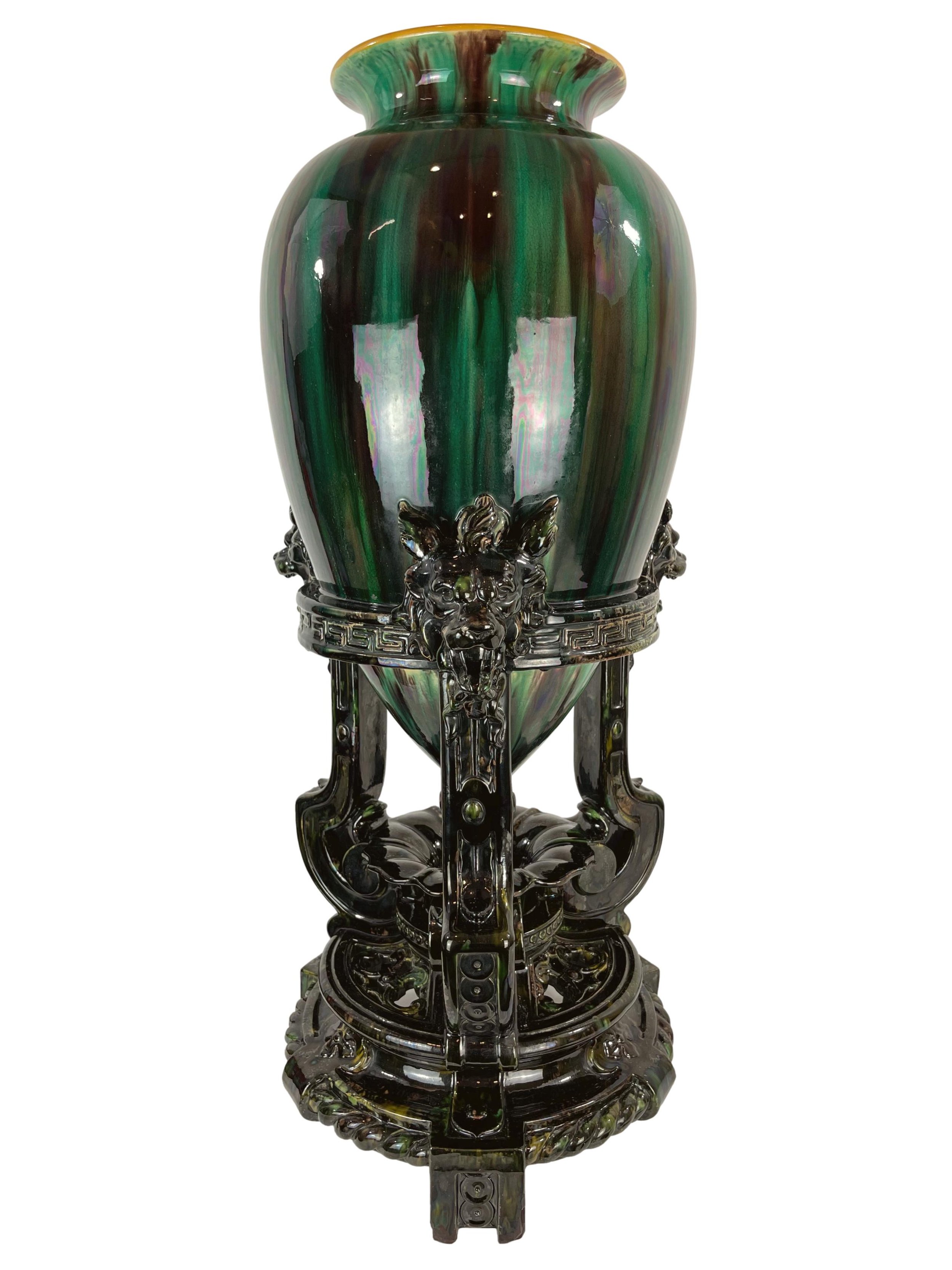 Image 5 of 19
Image 5 of 19

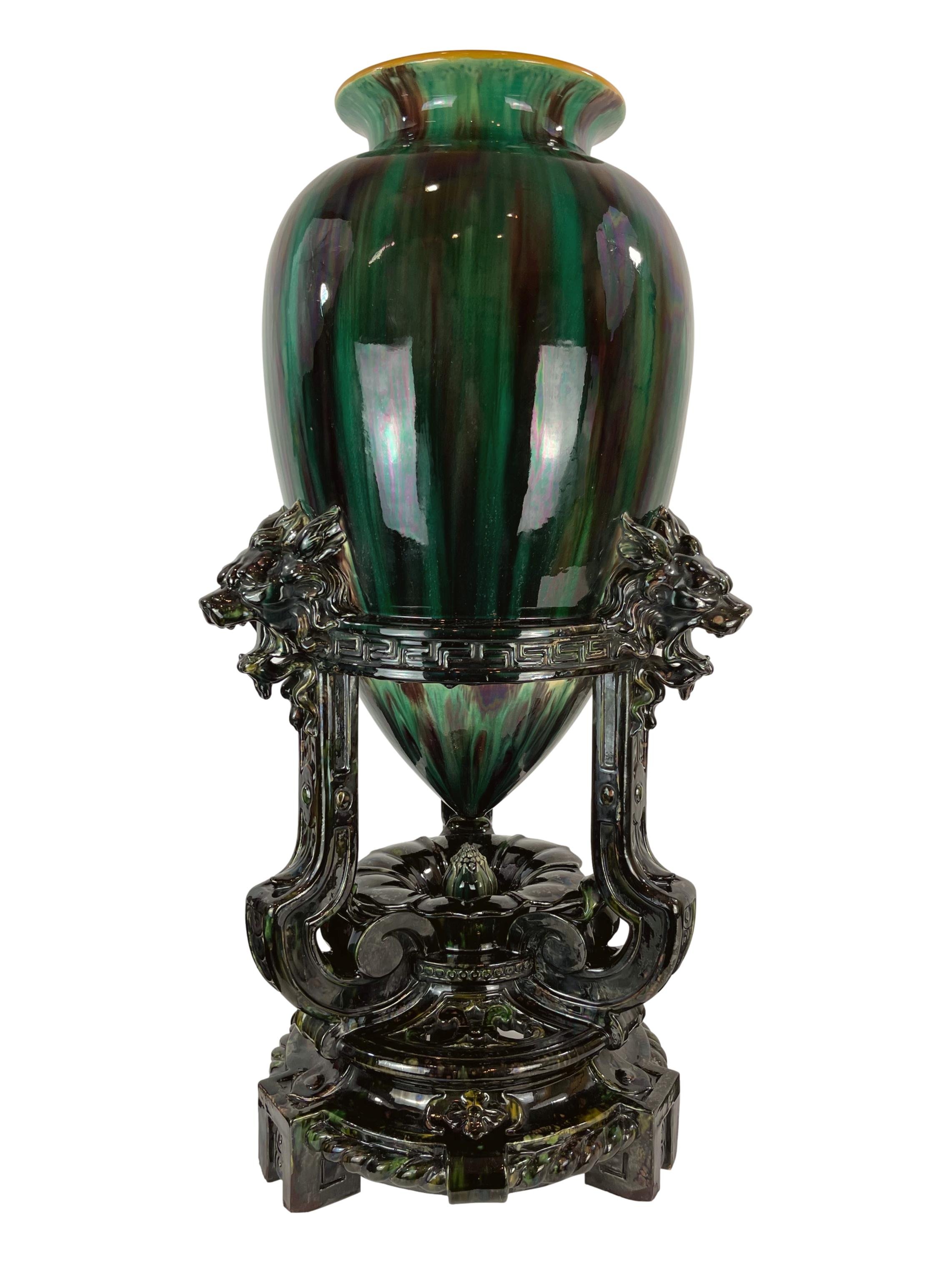 Image 6 of 19
Image 6 of 19

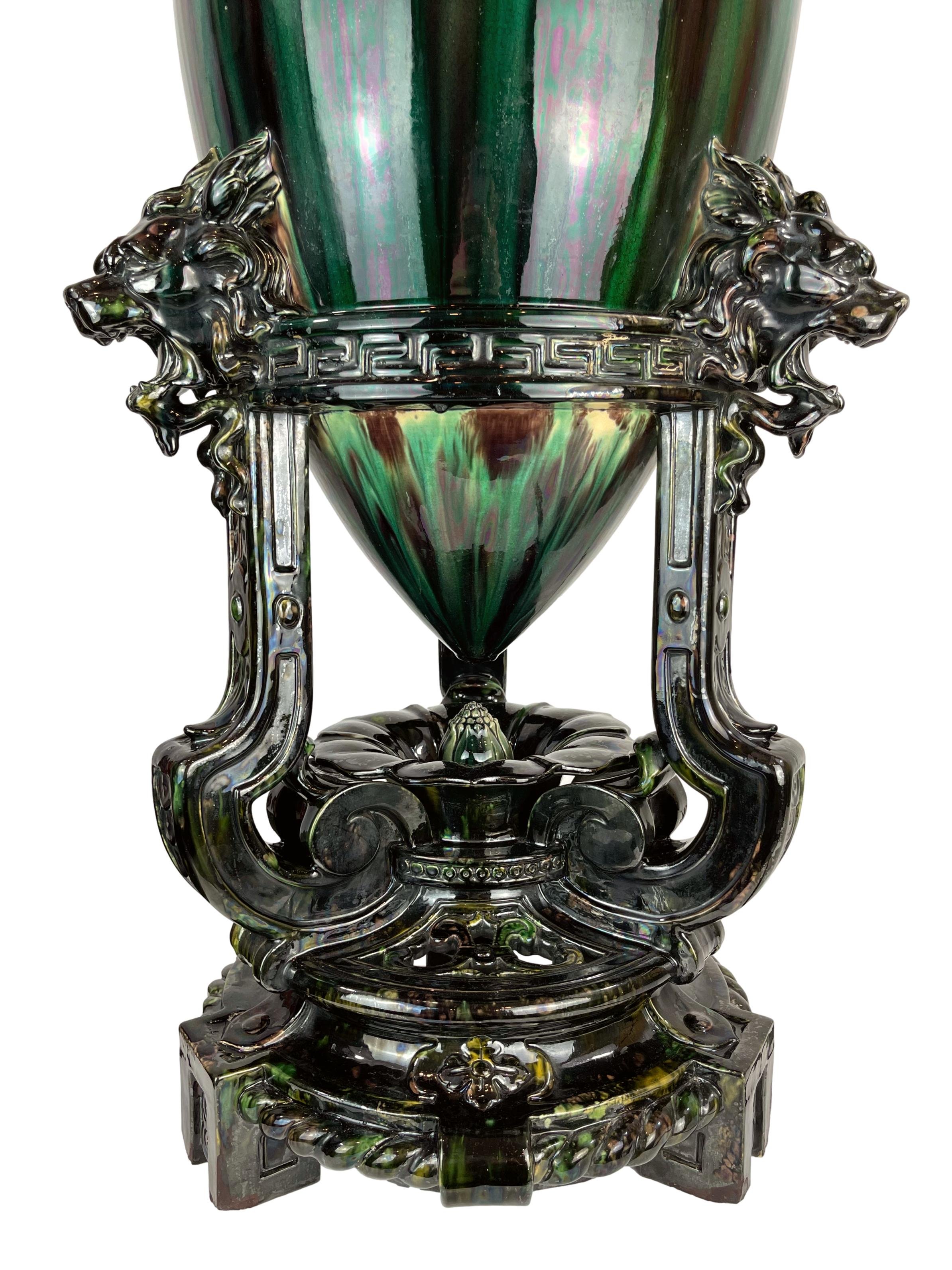 Image 7 of 19
Image 7 of 19

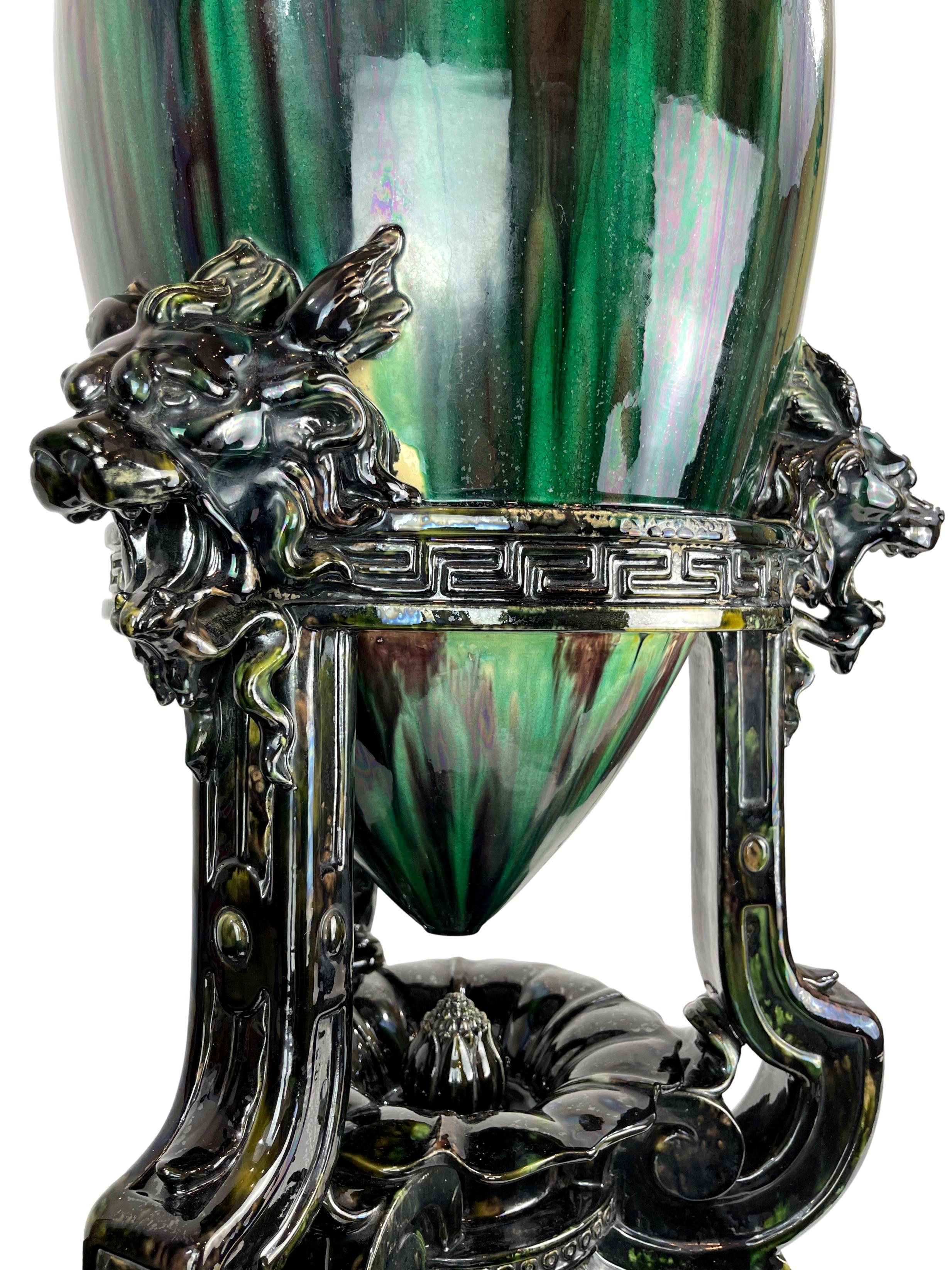 Image 8 of 19
Image 8 of 19

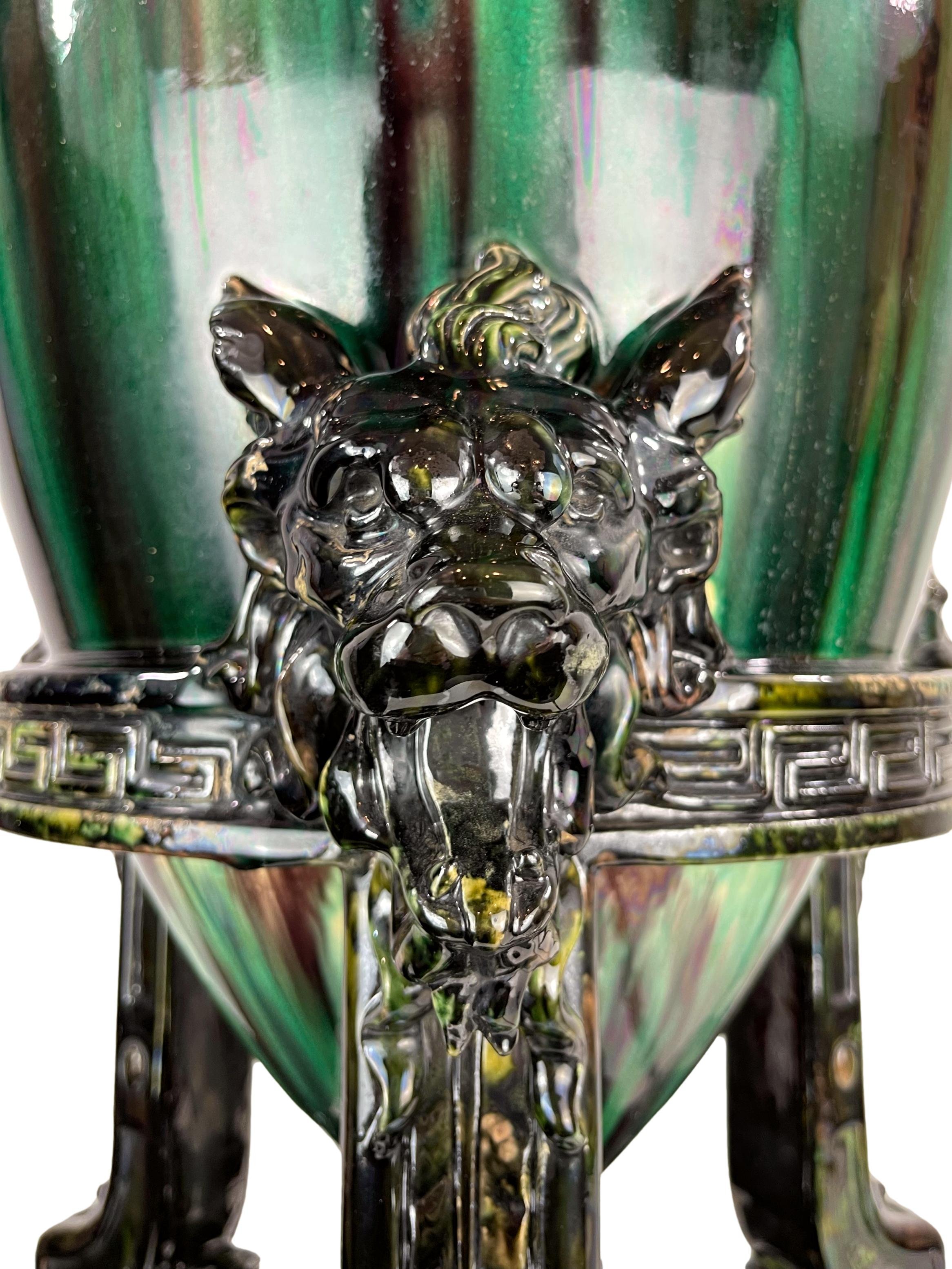 Image 9 of 19
Image 9 of 19

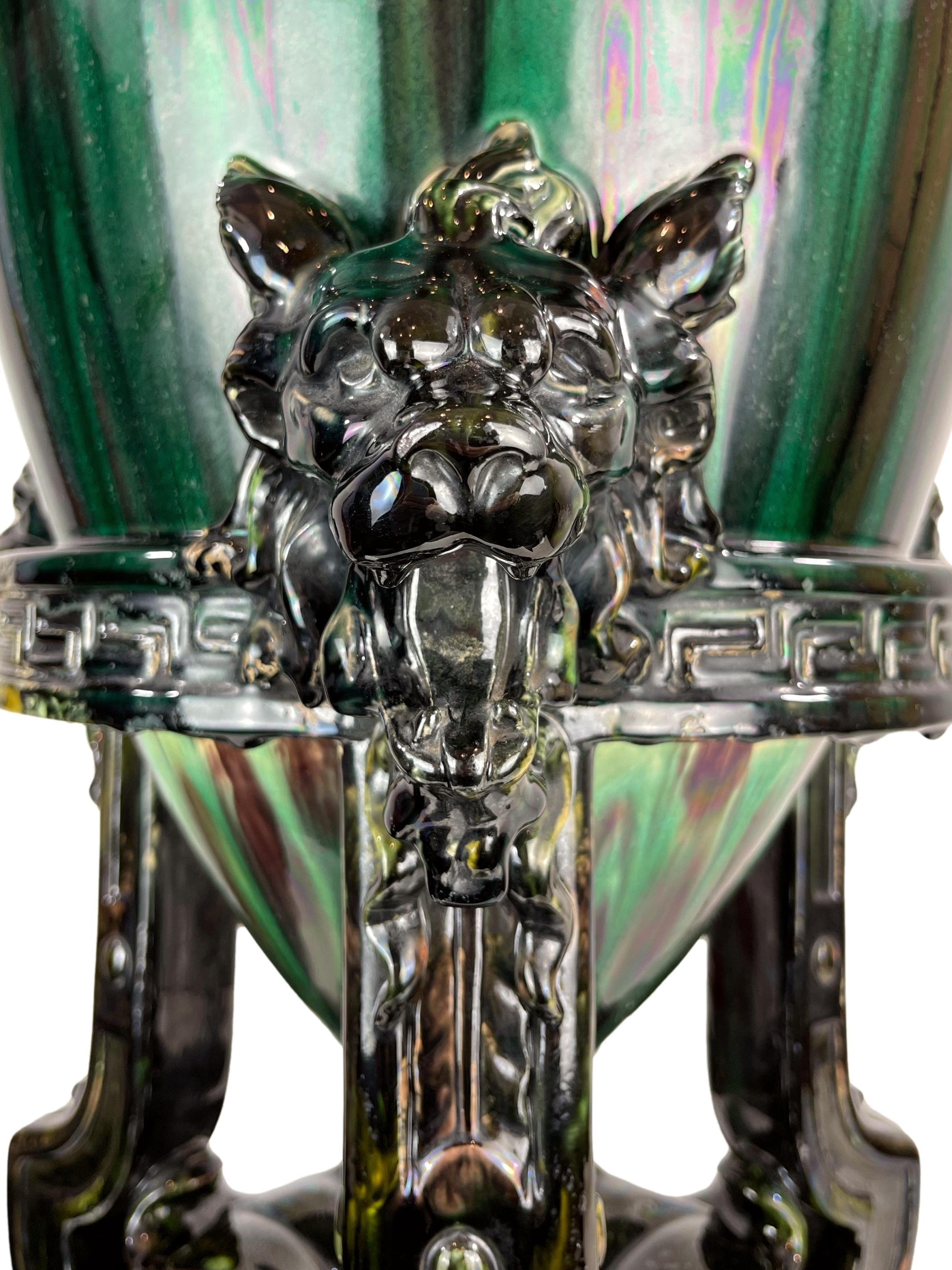 Image 10 of 19
Image 10 of 19

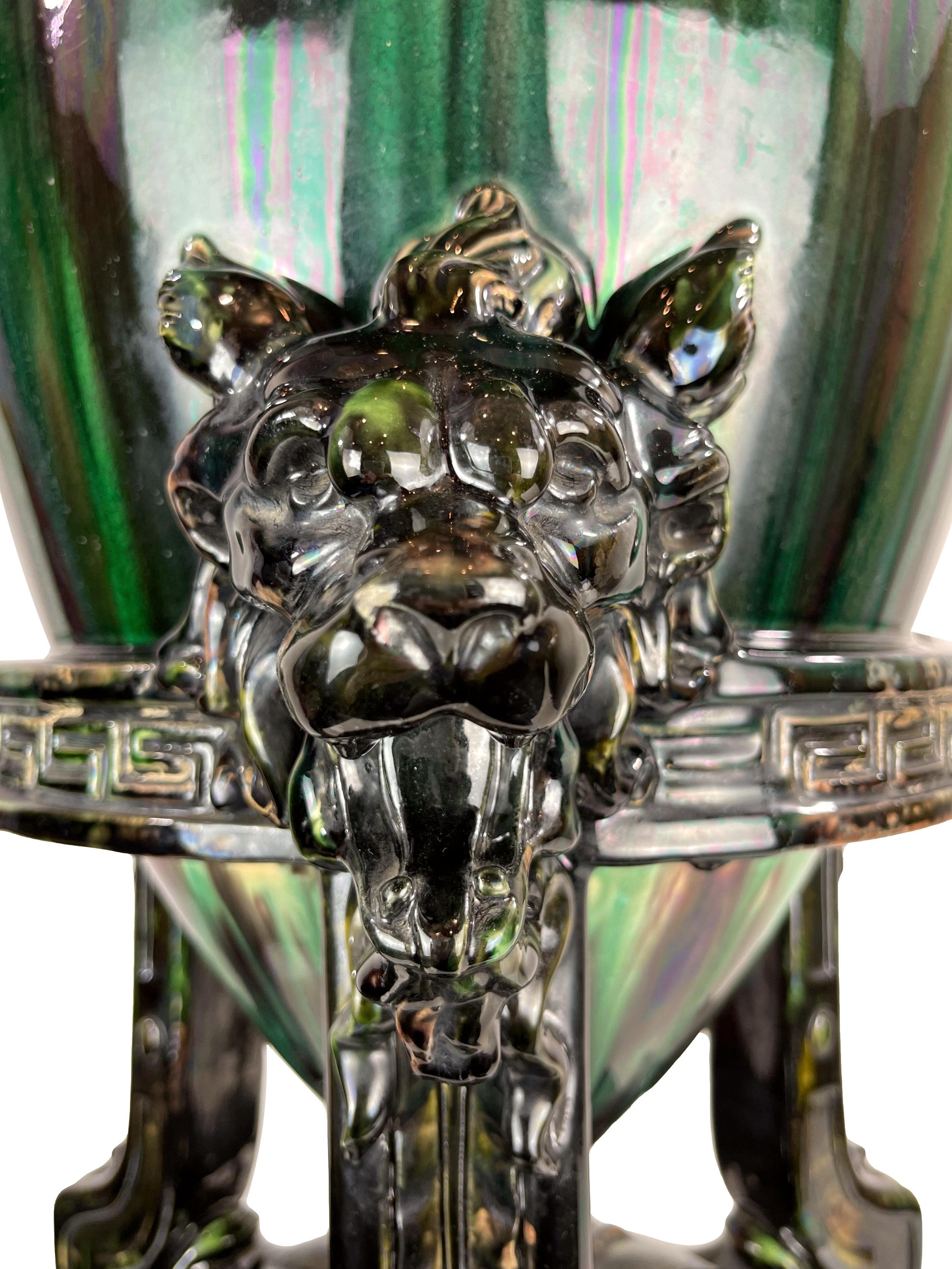 Image 11 of 19
Image 11 of 19

 Image 12 of 19
Image 12 of 19

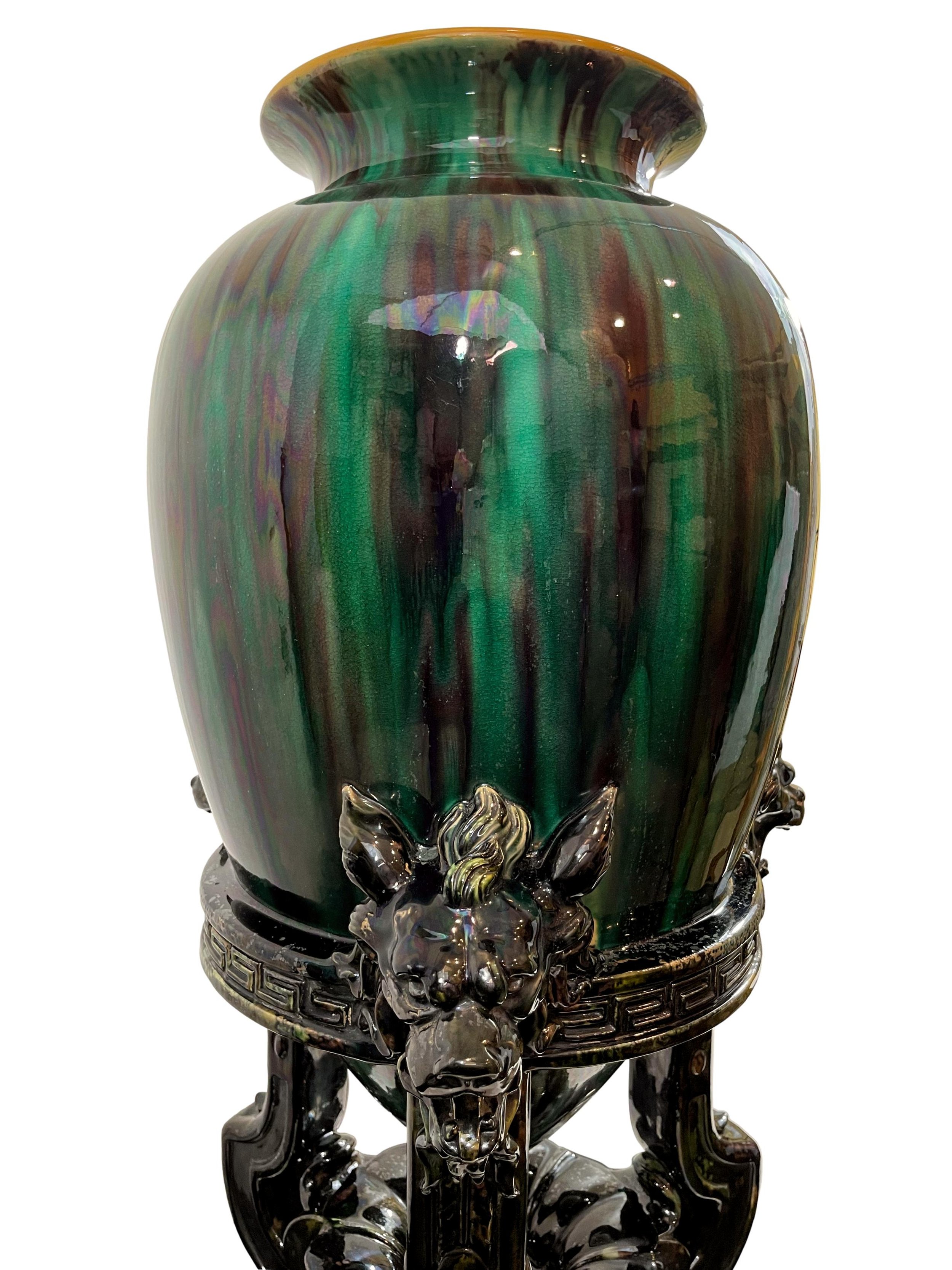 Image 13 of 19
Image 13 of 19

 Image 14 of 19
Image 14 of 19

 Image 15 of 19
Image 15 of 19

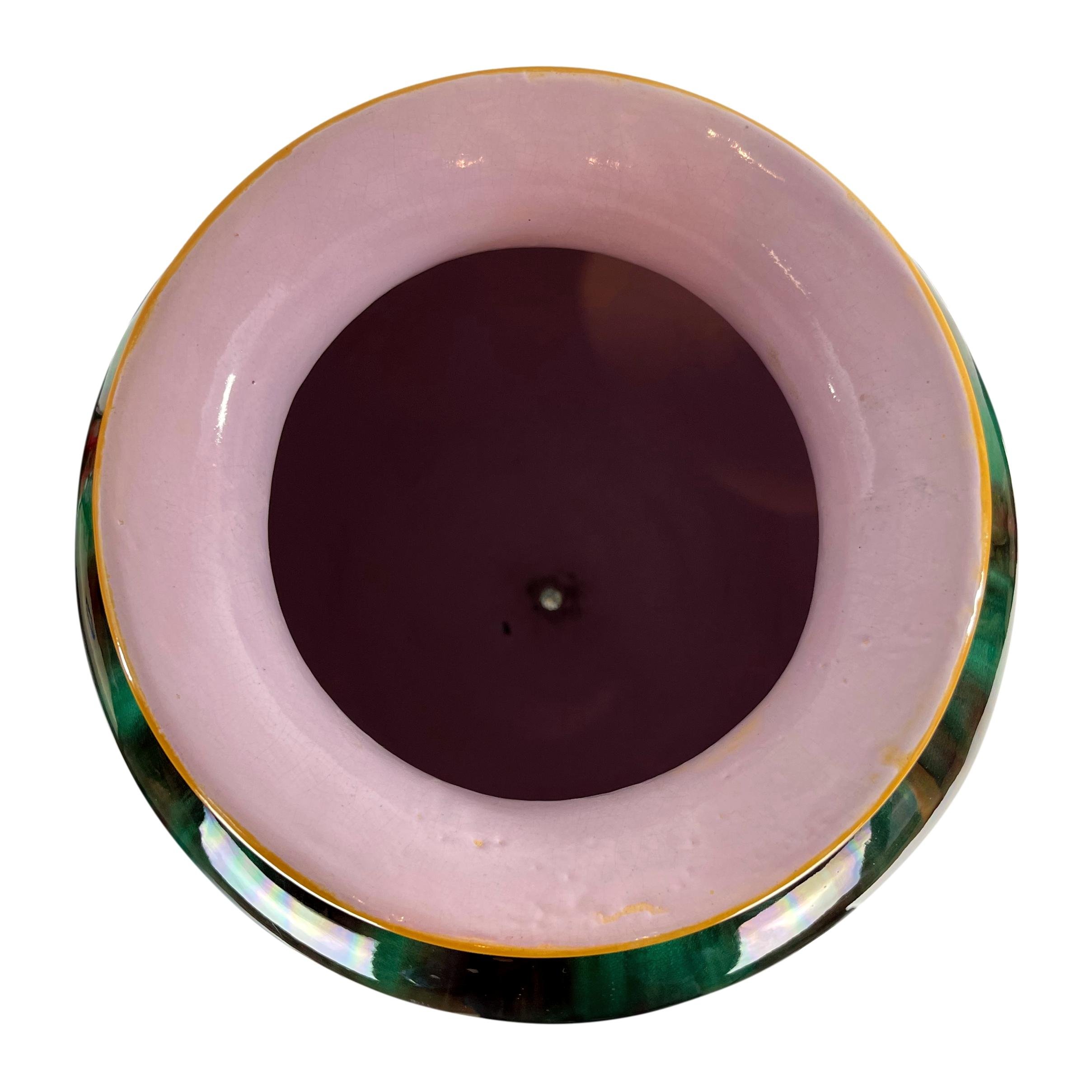 Image 16 of 19
Image 16 of 19

 Image 17 of 19
Image 17 of 19

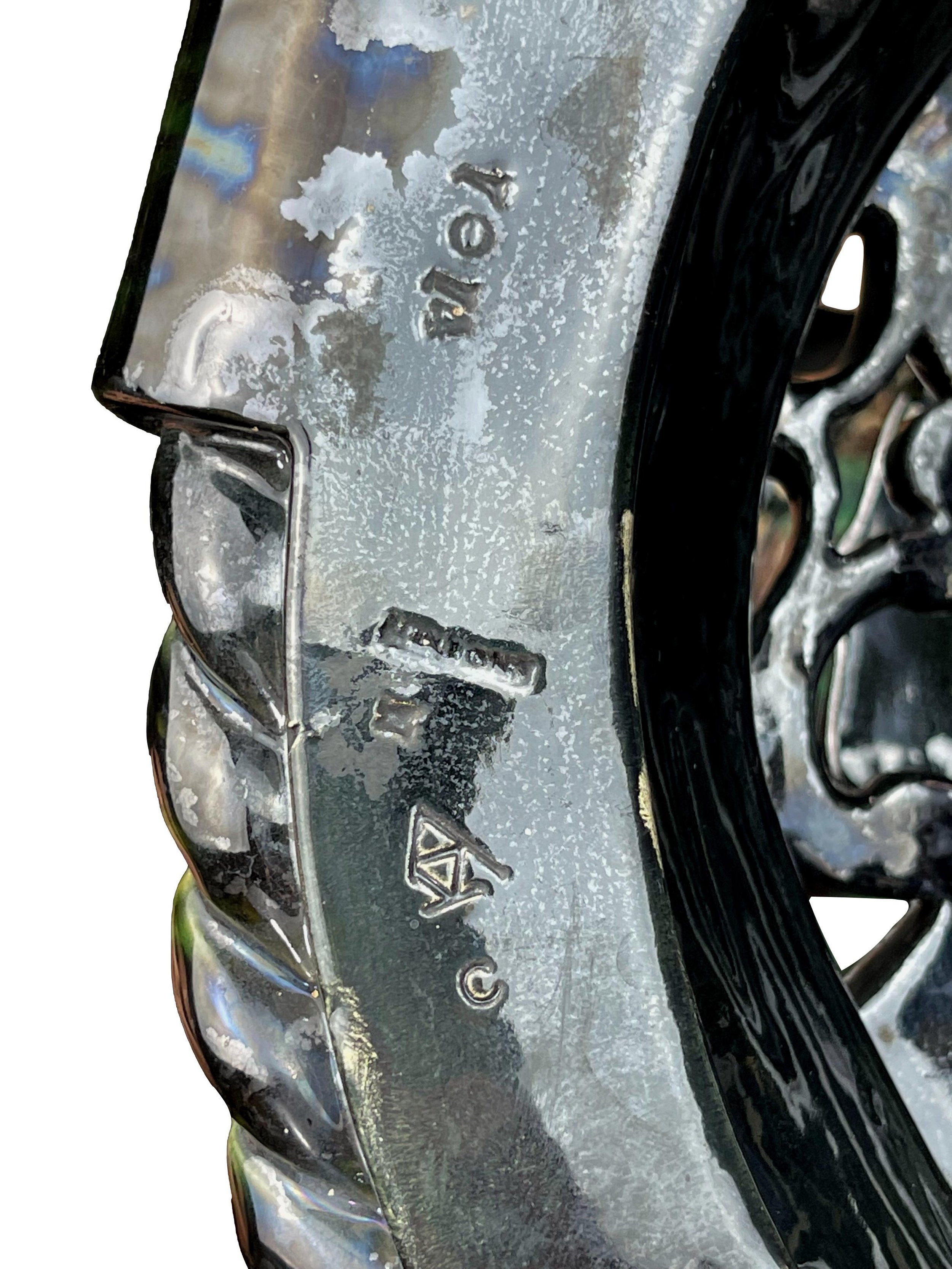 Image 18 of 19
Image 18 of 19

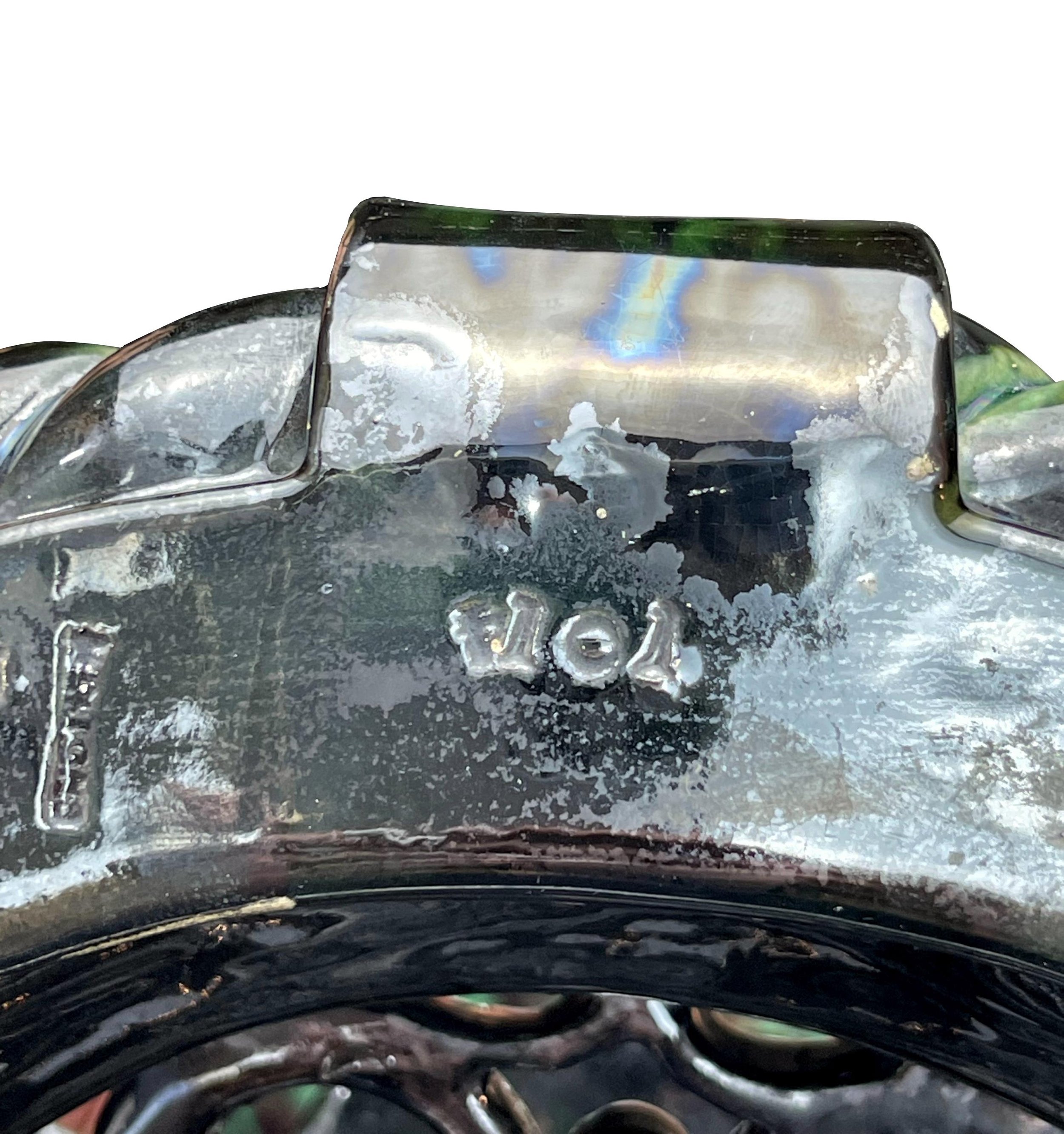 Image 19 of 19
Image 19 of 19

Monumental Minton Majolica Amphora Vase, 1879, attrib. to Christopher Dresser
Monumental Minton Majolica Floor Vase, molded as a large Chinese bottle vase glazed in mottled green, brown, and black, banded in yellow, the interior glazed in pink, supported by an integral black glazed tripod base with three lions’ heads above a central stylized poppy, made to simulate an intricately carved and lacquered Japanese wooden stand.
Impressed marks to reverse: 'MINTONS,' with date cypher for 1879, and design number '1014,' which corresponds to 'Vase, Chinese Tripod, Tall (M)' in the Minton Majolica Shape Numbers Books preserved in the Minton Archives.*
Almost certainly designed by Christopher Dresser (1834-1904), the most important and influential industrial designer of the Victorian Age. His highly innovative and original designs were executed over diverse media, including ceramics, metalwork, wallpaper, glass, furniture, and textiles.
Two colored drawings by Dresser of 'Chinese bottle vases' with integral stands are illustrated by J. Jones (p. 89), who explains the probable inspiration for Dresser's design:
"The British Ambassador to Japan, Sir Rutherford Alcock, and avid collector of, and enthusiast for Japanese porcelain, was instrumental in organising the first major display of Japanese artifacts at the [London International] Exhibition of 1862 which was to have a tremendous impact on Western art."
Christopher Dresser, a then young designer, attained permission from Sir Rutherford Alcock to make detailed drawings of the exhibits. Clearly, the event had a profound effect on Dresser, who later wrote:
"I firmly believe that the introduction of the works of Japanese handicraftsman into England had done as much to improve our national taste as even our schools of art and public museums, great as is the good they have achieved; for these Japanese objects have got into our homes, and among them we live."
For thirty years we have been among the world’s preeminent specialists in fine antique majolica.
BOOK REFERENCES:
*1-Joan Jones, "MINTON: The First Two Hundred Years of Design and Production." Shrewsbury, England: Swan Hill Press, 1993, Appendix E, p. 349. Minton Ornamental Shapes (i.e., design numbers) listed in Appendix E, pp. 343-377.
2-Susan Weber et al., MAJOLICA MANIA: Transatlantic Pottery in England and the United States 1850--1915. New Haven and London: Yale University Press, 2020, Volume Two, p. 100.
3-Marilyn G. Karmason and Joan B. Stacke, MAJOLICA, A Complete History and Illustrated Survey. New York: Harry N. Abrams Publishers, Second Edition, 2002, p. 34.
4--Sotheby’s ENGLISH MAJOLICA FROM A PRIVATE COLLECTION. New York: Sale date March 11, 1997; Sale number: 6958, Lot number 293.
Monumental Minton Majolica Floor Vase, molded as a large Chinese bottle vase glazed in mottled green, brown, and black, banded in yellow, the interior glazed in pink, supported by an integral black glazed tripod base with three lions’ heads above a central stylized poppy, made to simulate an intricately carved and lacquered Japanese wooden stand.
Impressed marks to reverse: 'MINTONS,' with date cypher for 1879, and design number '1014,' which corresponds to 'Vase, Chinese Tripod, Tall (M)' in the Minton Majolica Shape Numbers Books preserved in the Minton Archives.*
Almost certainly designed by Christopher Dresser (1834-1904), the most important and influential industrial designer of the Victorian Age. His highly innovative and original designs were executed over diverse media, including ceramics, metalwork, wallpaper, glass, furniture, and textiles.
Two colored drawings by Dresser of 'Chinese bottle vases' with integral stands are illustrated by J. Jones (p. 89), who explains the probable inspiration for Dresser's design:
"The British Ambassador to Japan, Sir Rutherford Alcock, and avid collector of, and enthusiast for Japanese porcelain, was instrumental in organising the first major display of Japanese artifacts at the [London International] Exhibition of 1862 which was to have a tremendous impact on Western art."
Christopher Dresser, a then young designer, attained permission from Sir Rutherford Alcock to make detailed drawings of the exhibits. Clearly, the event had a profound effect on Dresser, who later wrote:
"I firmly believe that the introduction of the works of Japanese handicraftsman into England had done as much to improve our national taste as even our schools of art and public museums, great as is the good they have achieved; for these Japanese objects have got into our homes, and among them we live."
For thirty years we have been among the world’s preeminent specialists in fine antique majolica.
BOOK REFERENCES:
*1-Joan Jones, "MINTON: The First Two Hundred Years of Design and Production." Shrewsbury, England: Swan Hill Press, 1993, Appendix E, p. 349. Minton Ornamental Shapes (i.e., design numbers) listed in Appendix E, pp. 343-377.
2-Susan Weber et al., MAJOLICA MANIA: Transatlantic Pottery in England and the United States 1850--1915. New Haven and London: Yale University Press, 2020, Volume Two, p. 100.
3-Marilyn G. Karmason and Joan B. Stacke, MAJOLICA, A Complete History and Illustrated Survey. New York: Harry N. Abrams Publishers, Second Edition, 2002, p. 34.
4--Sotheby’s ENGLISH MAJOLICA FROM A PRIVATE COLLECTION. New York: Sale date March 11, 1997; Sale number: 6958, Lot number 293.
Monumental Minton Majolica Floor Vase, molded as a large Chinese bottle vase glazed in mottled green, brown, and black, banded in yellow, the interior glazed in pink, supported by an integral black glazed tripod base with three lions’ heads above a central stylized poppy, made to simulate an intricately carved and lacquered Japanese wooden stand.
Impressed marks to reverse: 'MINTONS,' with date cypher for 1879, and design number '1014,' which corresponds to 'Vase, Chinese Tripod, Tall (M)' in the Minton Majolica Shape Numbers Books preserved in the Minton Archives.*
Almost certainly designed by Christopher Dresser (1834-1904), the most important and influential industrial designer of the Victorian Age. His highly innovative and original designs were executed over diverse media, including ceramics, metalwork, wallpaper, glass, furniture, and textiles.
Two colored drawings by Dresser of 'Chinese bottle vases' with integral stands are illustrated by J. Jones (p. 89), who explains the probable inspiration for Dresser's design:
"The British Ambassador to Japan, Sir Rutherford Alcock, and avid collector of, and enthusiast for Japanese porcelain, was instrumental in organising the first major display of Japanese artifacts at the [London International] Exhibition of 1862 which was to have a tremendous impact on Western art."
Christopher Dresser, a then young designer, attained permission from Sir Rutherford Alcock to make detailed drawings of the exhibits. Clearly, the event had a profound effect on Dresser, who later wrote:
"I firmly believe that the introduction of the works of Japanese handicraftsman into England had done as much to improve our national taste as even our schools of art and public museums, great as is the good they have achieved; for these Japanese objects have got into our homes, and among them we live."
For thirty years we have been among the world’s preeminent specialists in fine antique majolica.
BOOK REFERENCES:
*1-Joan Jones, "MINTON: The First Two Hundred Years of Design and Production." Shrewsbury, England: Swan Hill Press, 1993, Appendix E, p. 349. Minton Ornamental Shapes (i.e., design numbers) listed in Appendix E, pp. 343-377.
2-Susan Weber et al., MAJOLICA MANIA: Transatlantic Pottery in England and the United States 1850--1915. New Haven and London: Yale University Press, 2020, Volume Two, p. 100.
3-Marilyn G. Karmason and Joan B. Stacke, MAJOLICA, A Complete History and Illustrated Survey. New York: Harry N. Abrams Publishers, Second Edition, 2002, p. 34.
4--Sotheby’s ENGLISH MAJOLICA FROM A PRIVATE COLLECTION. New York: Sale date March 11, 1997; Sale number: 6958, Lot number 293.


